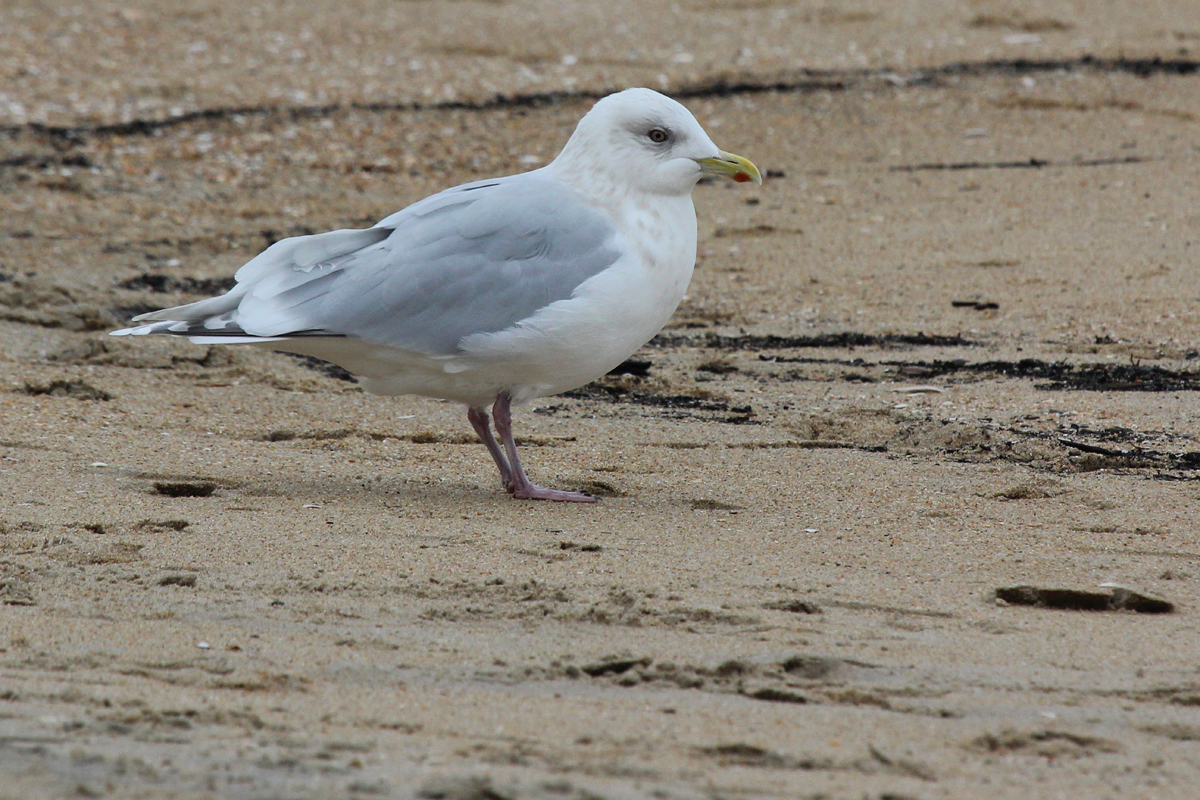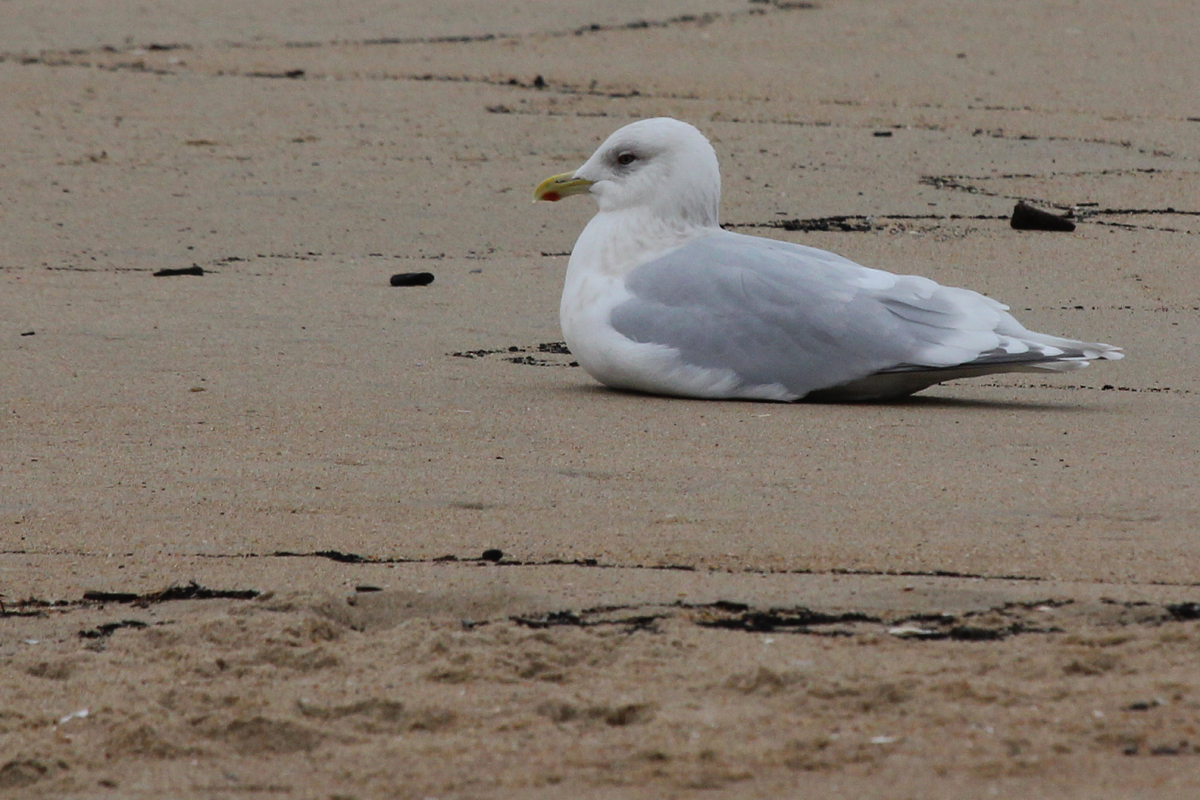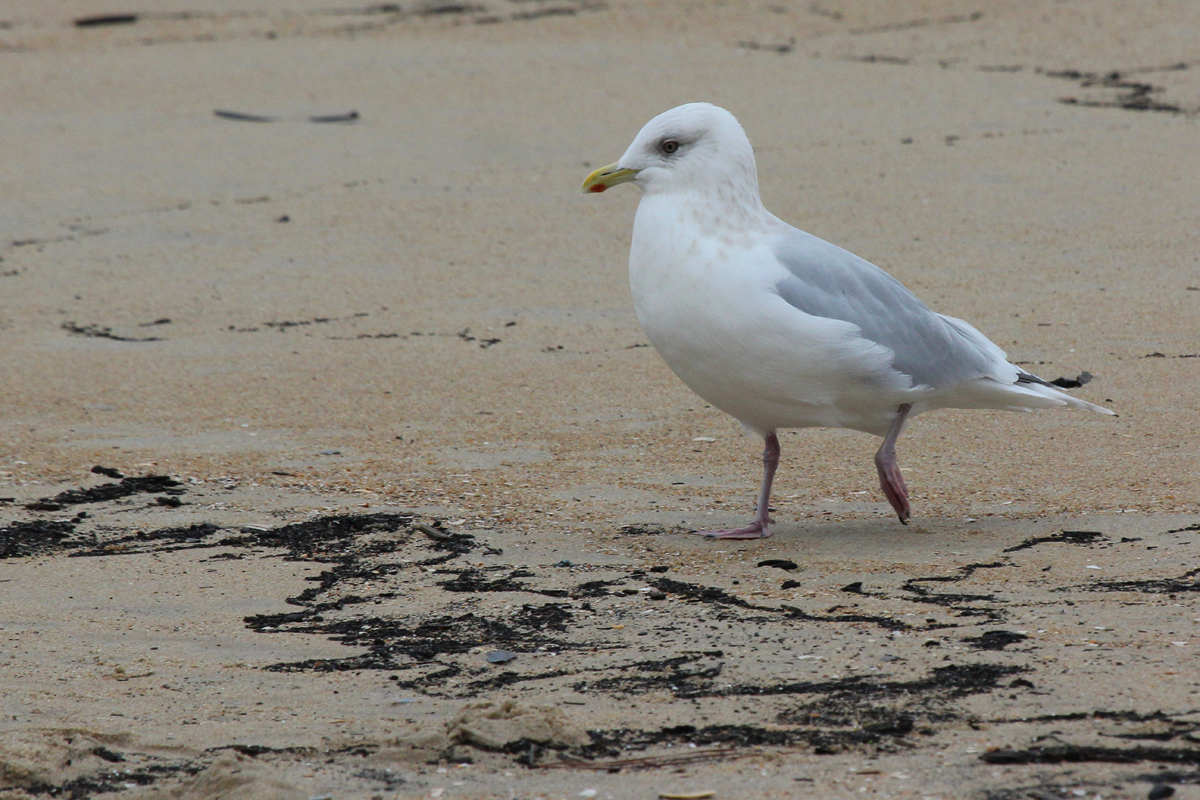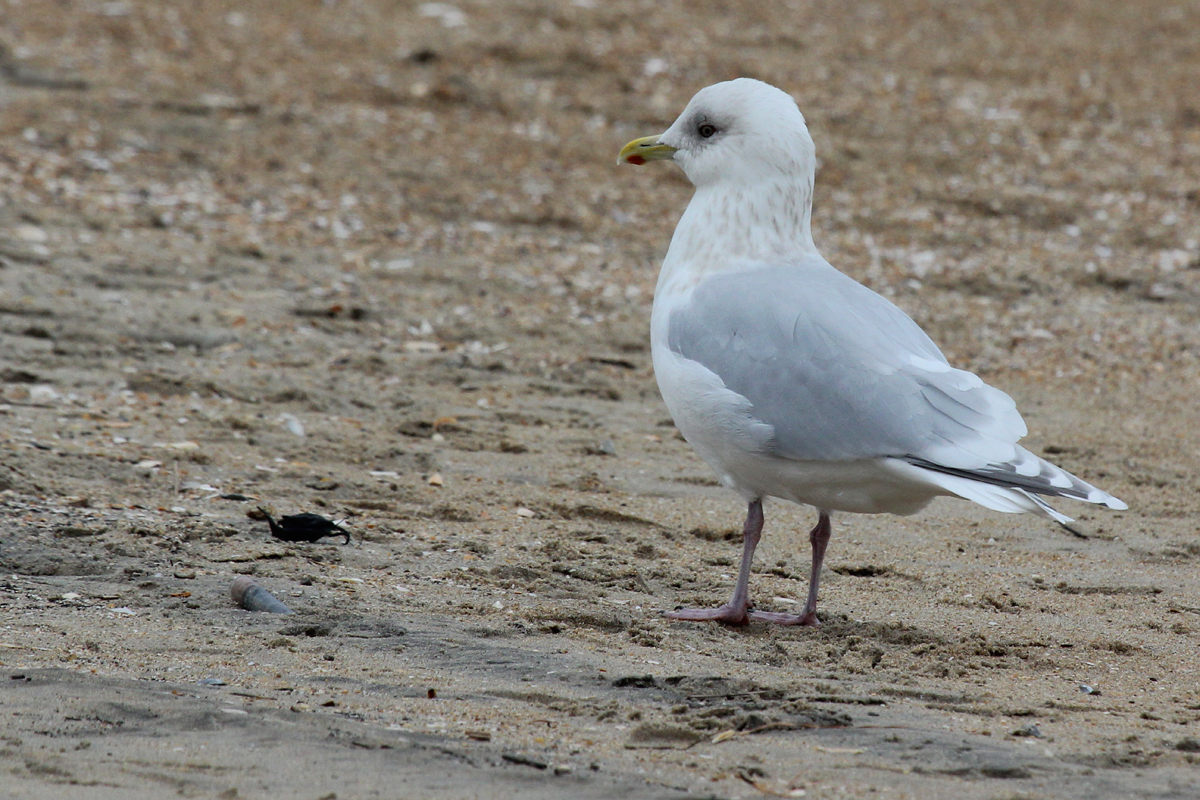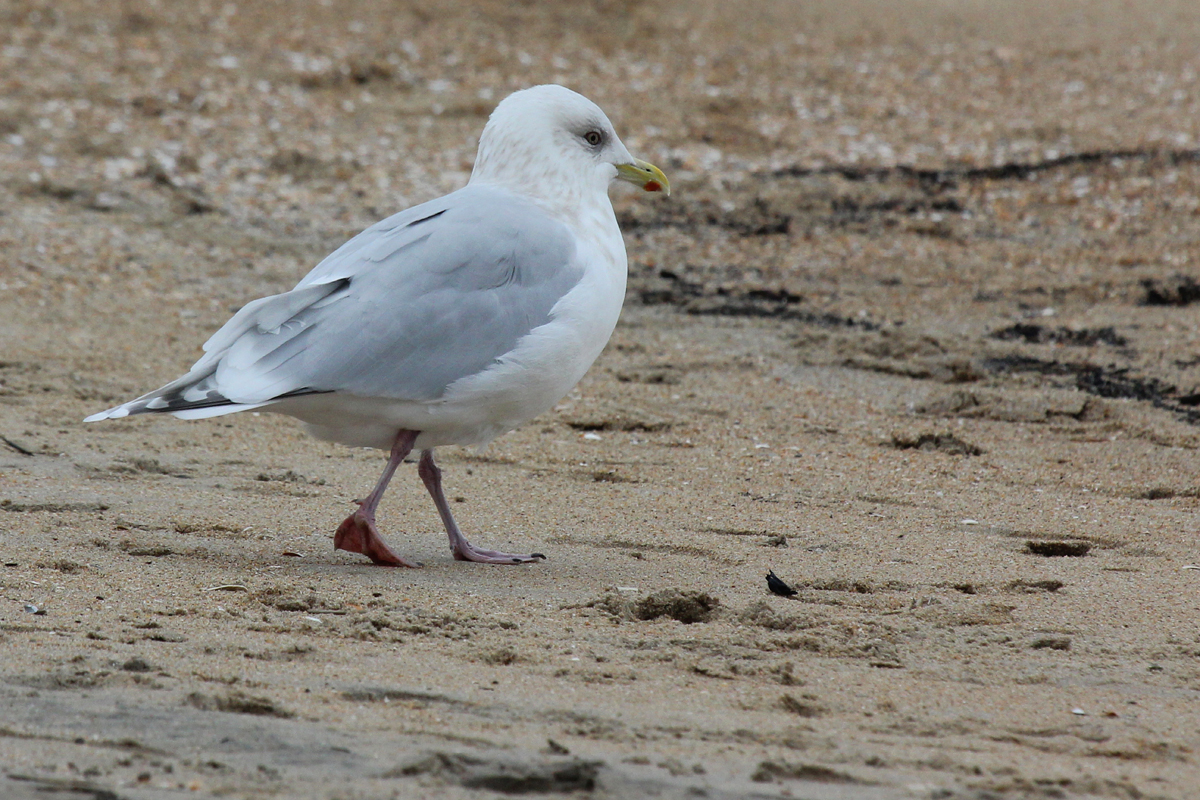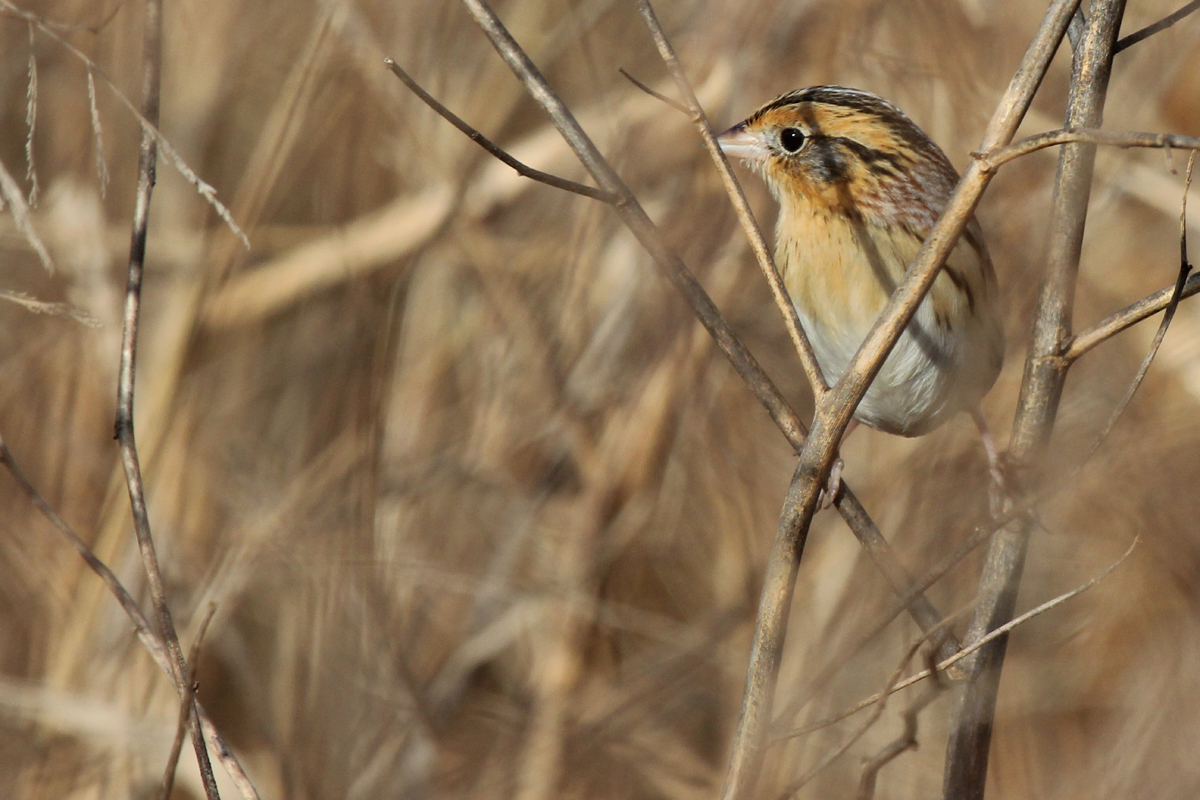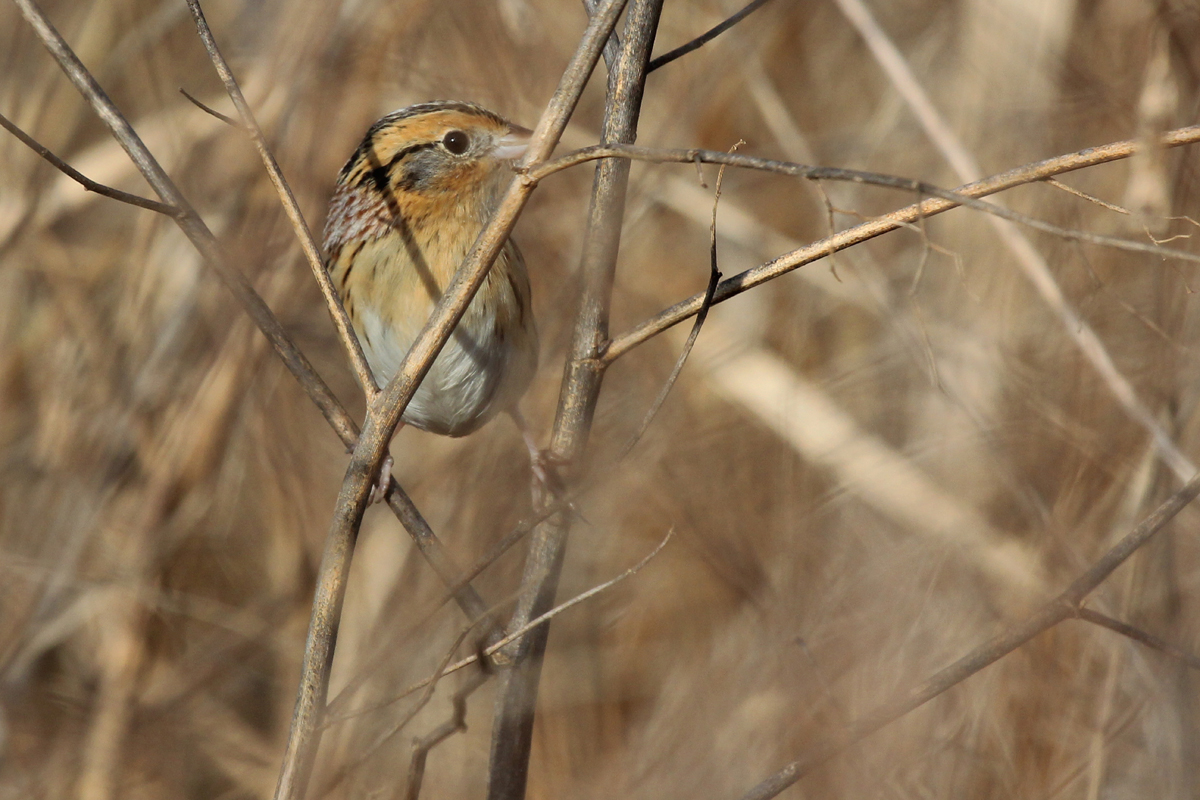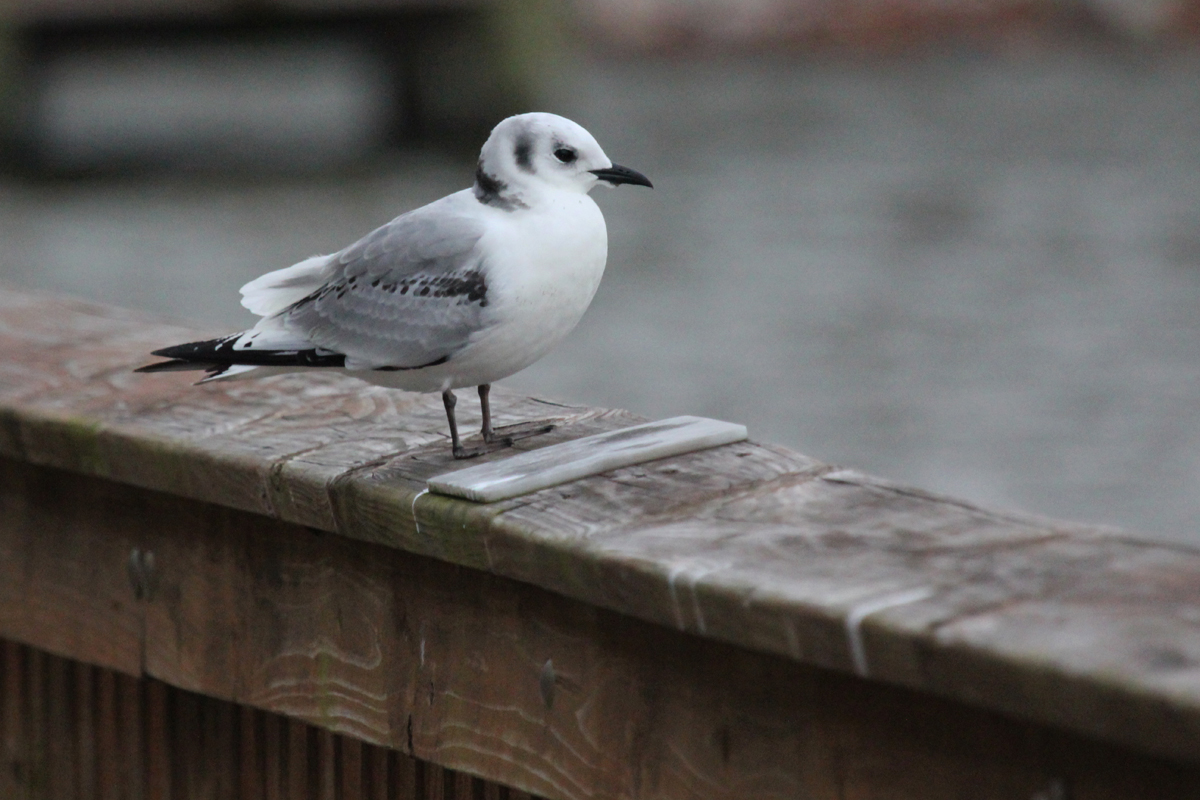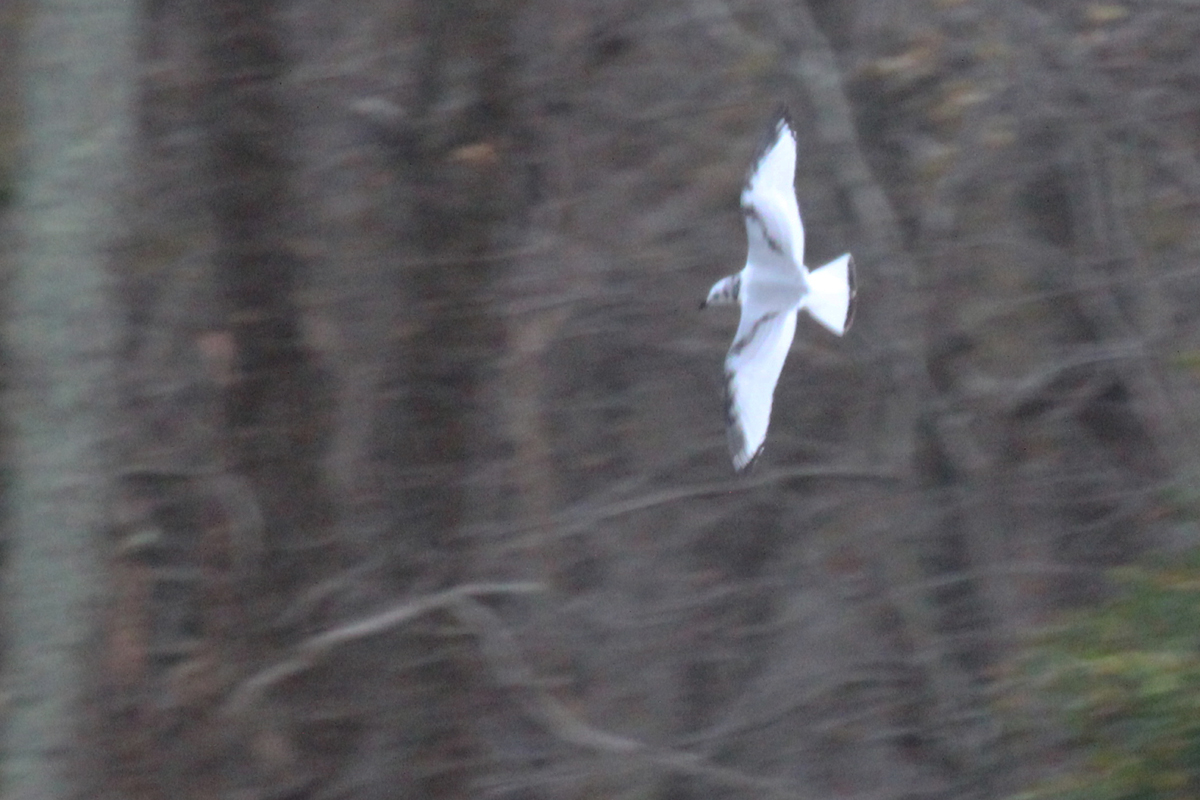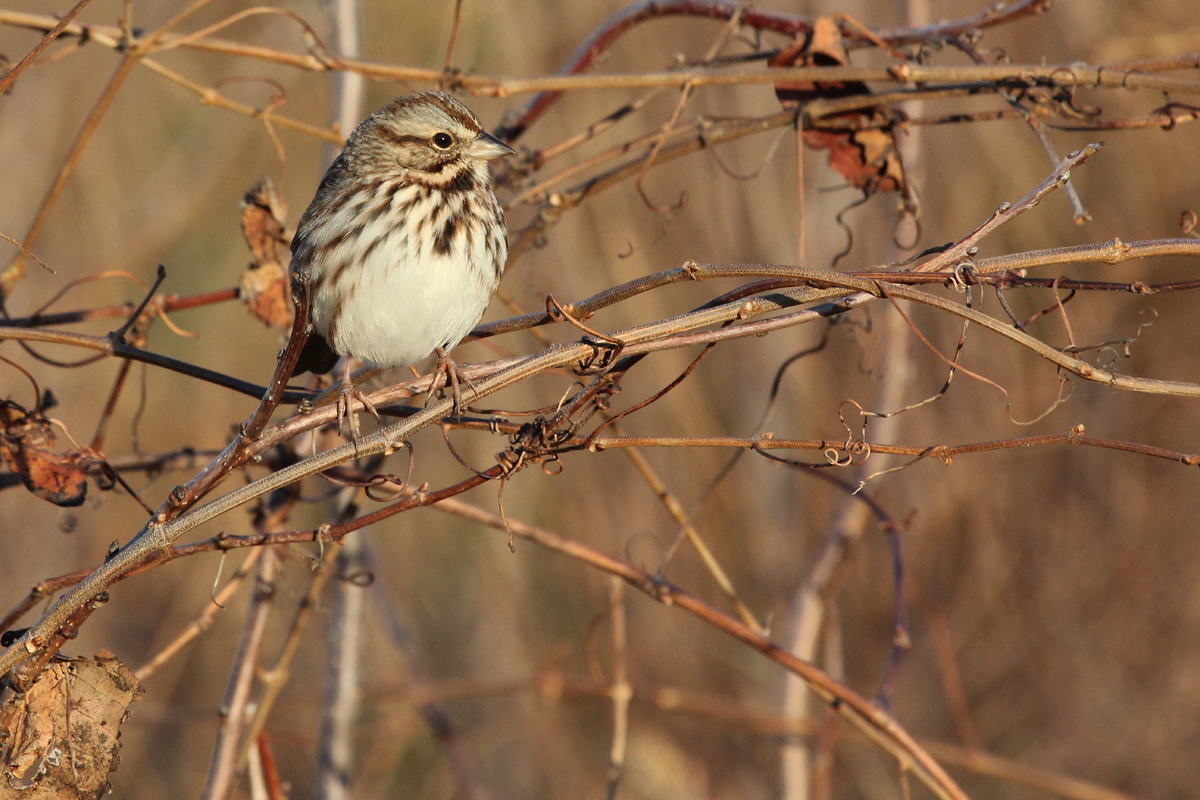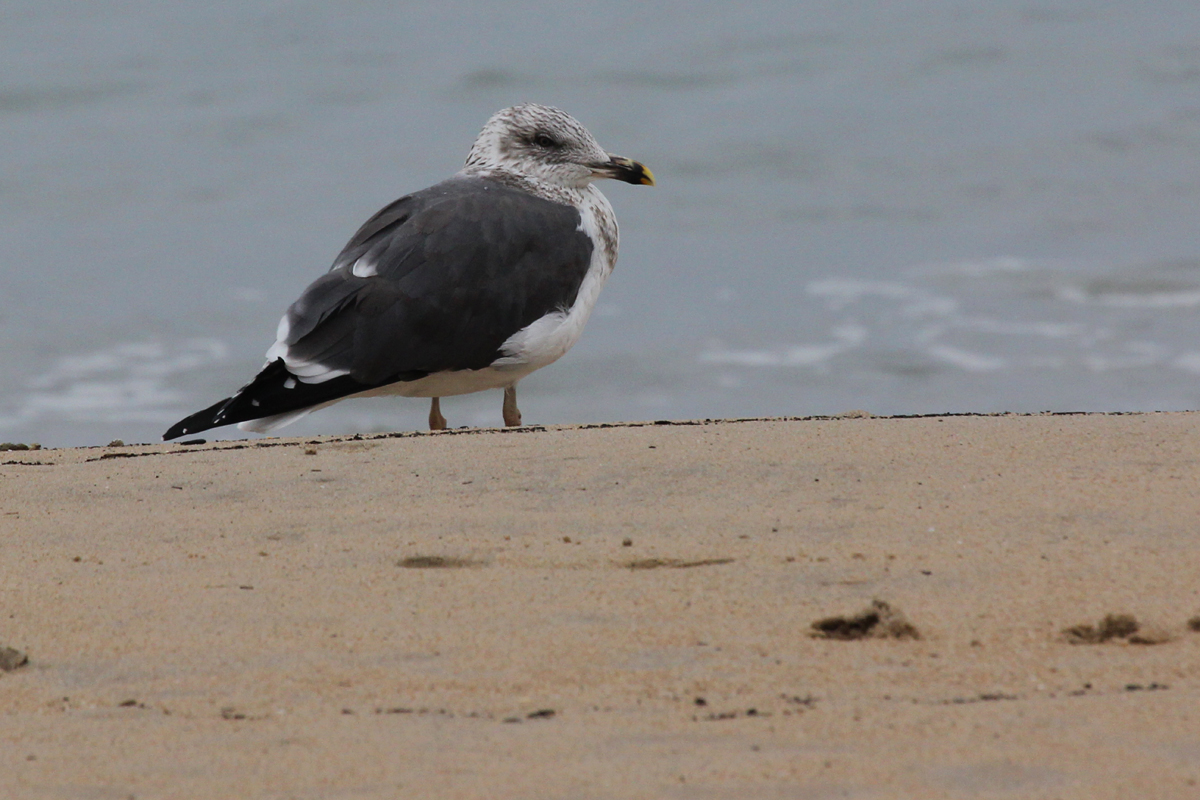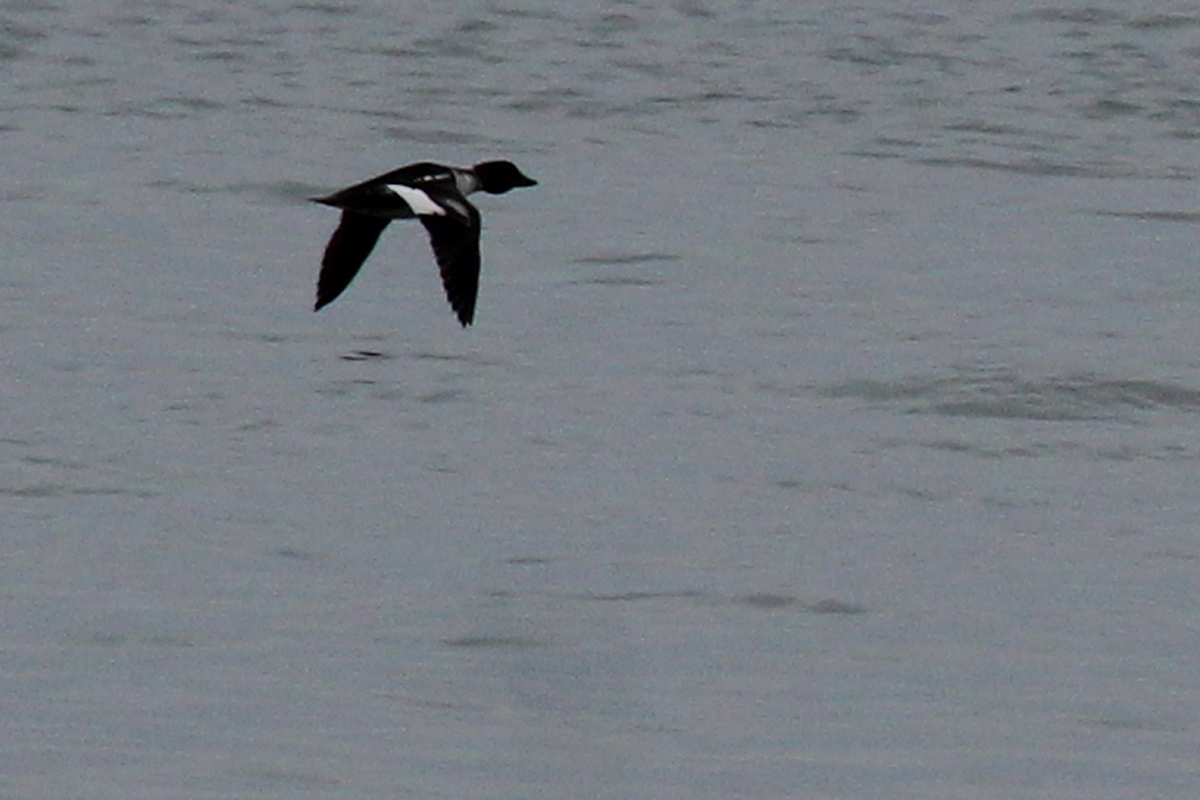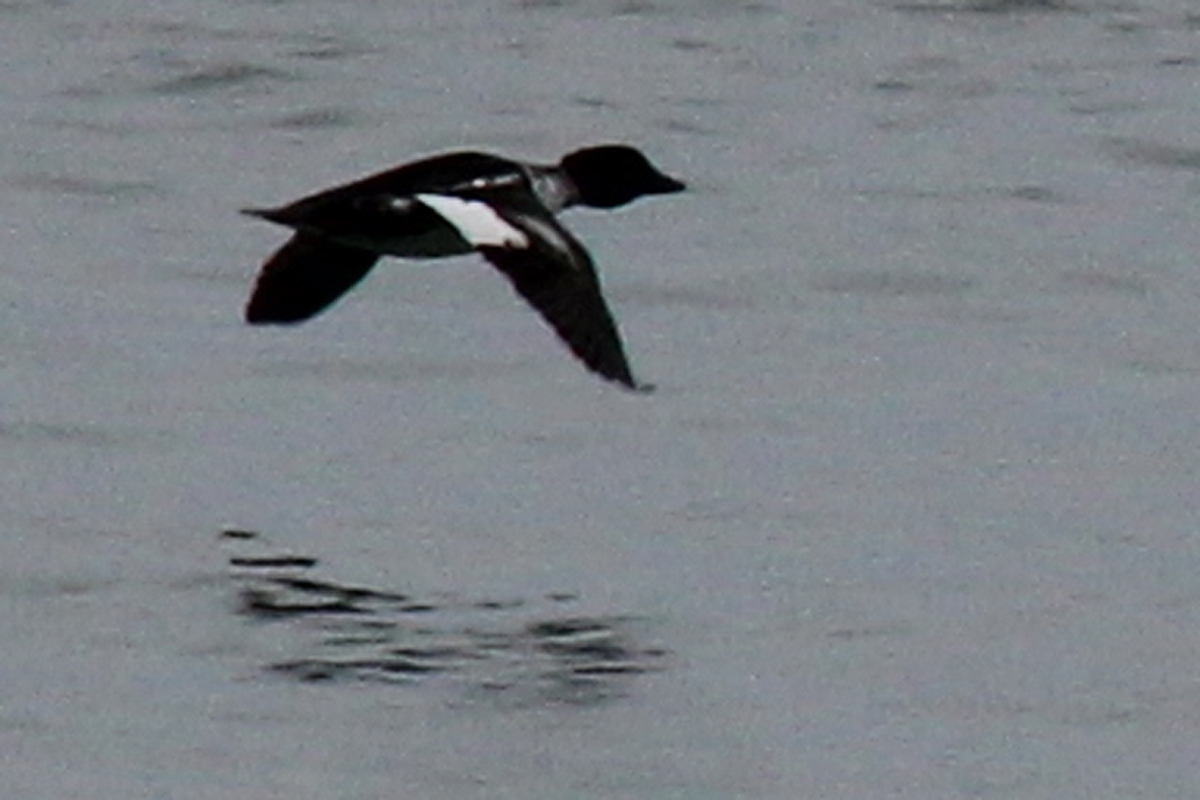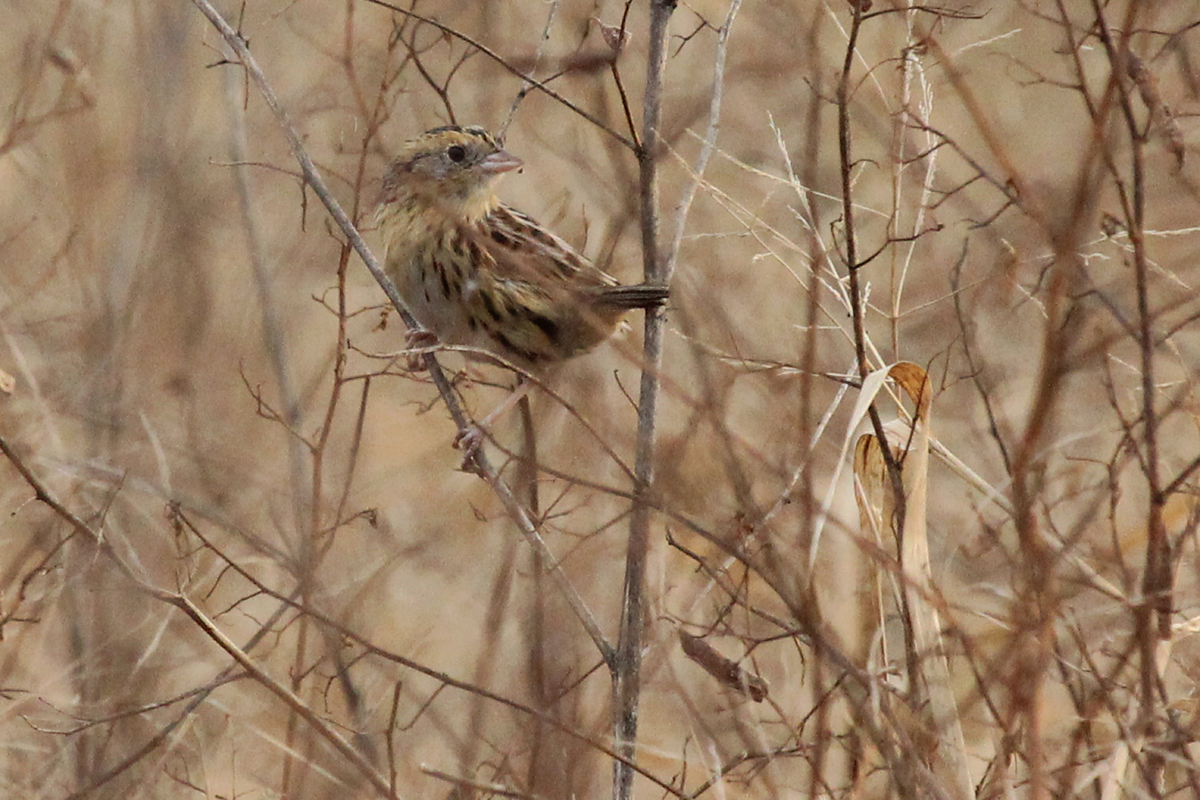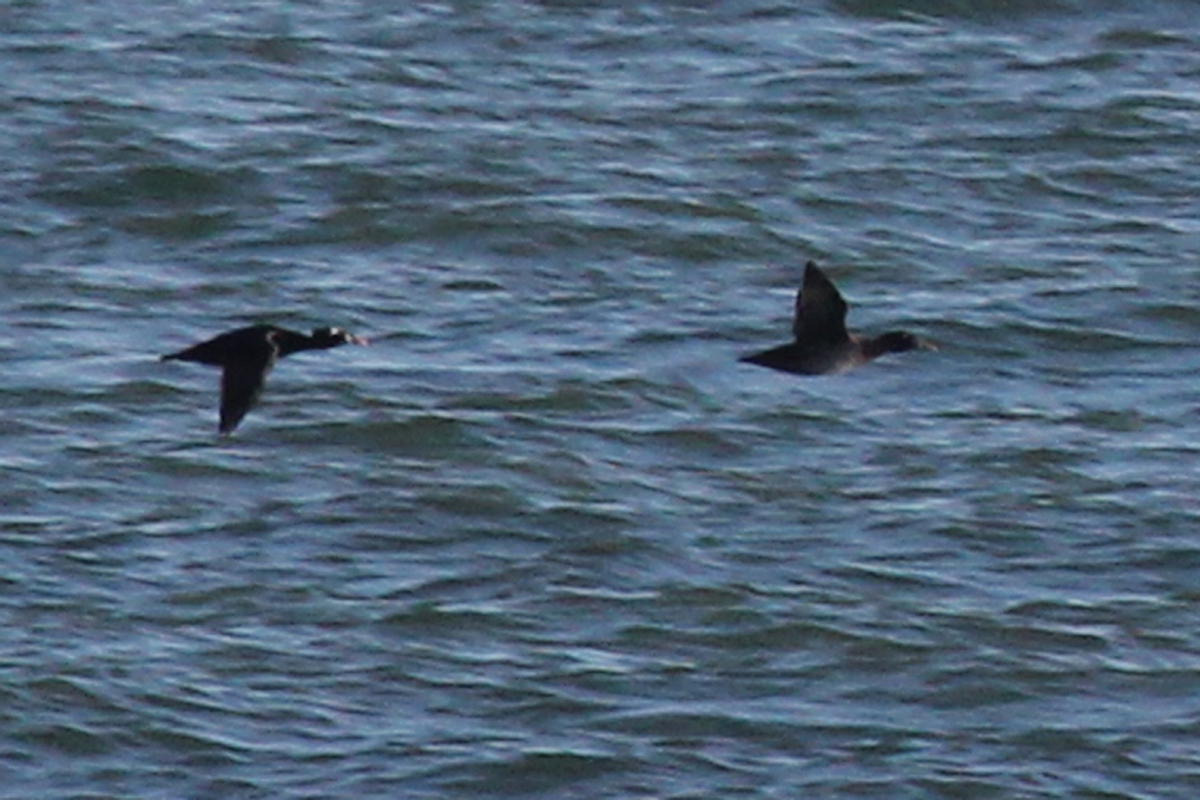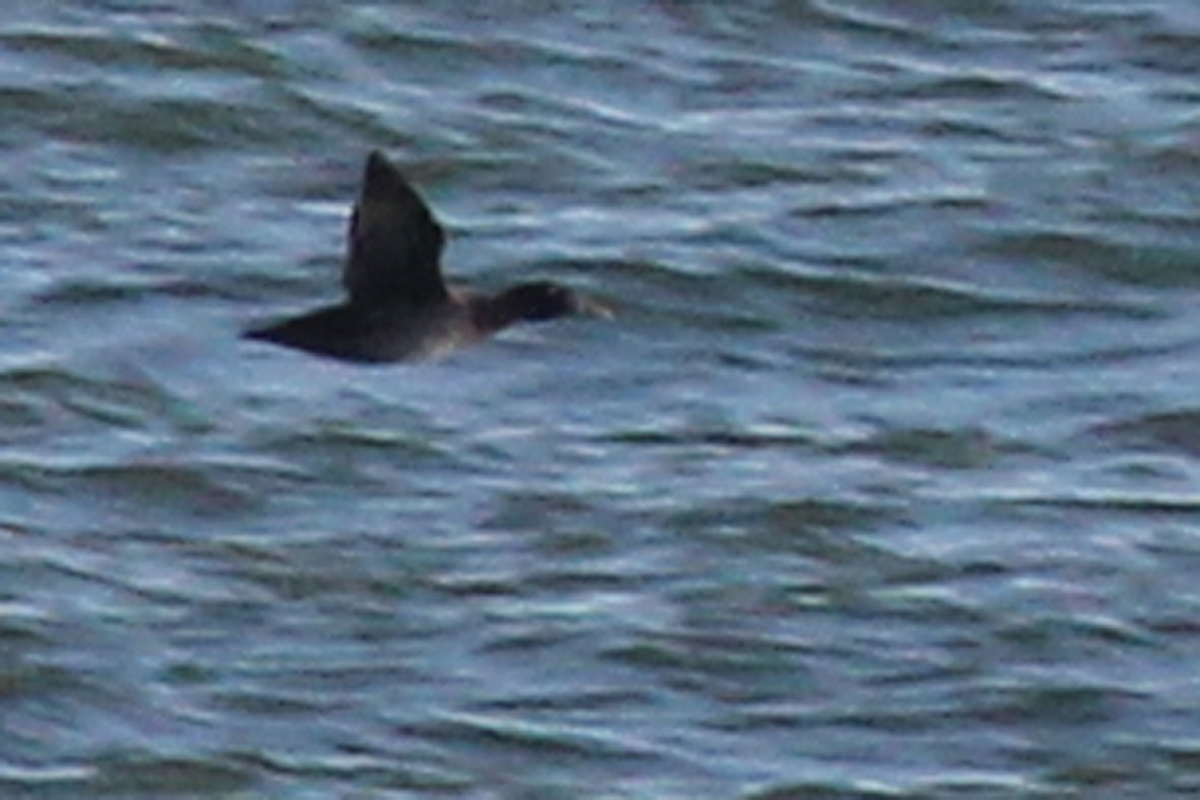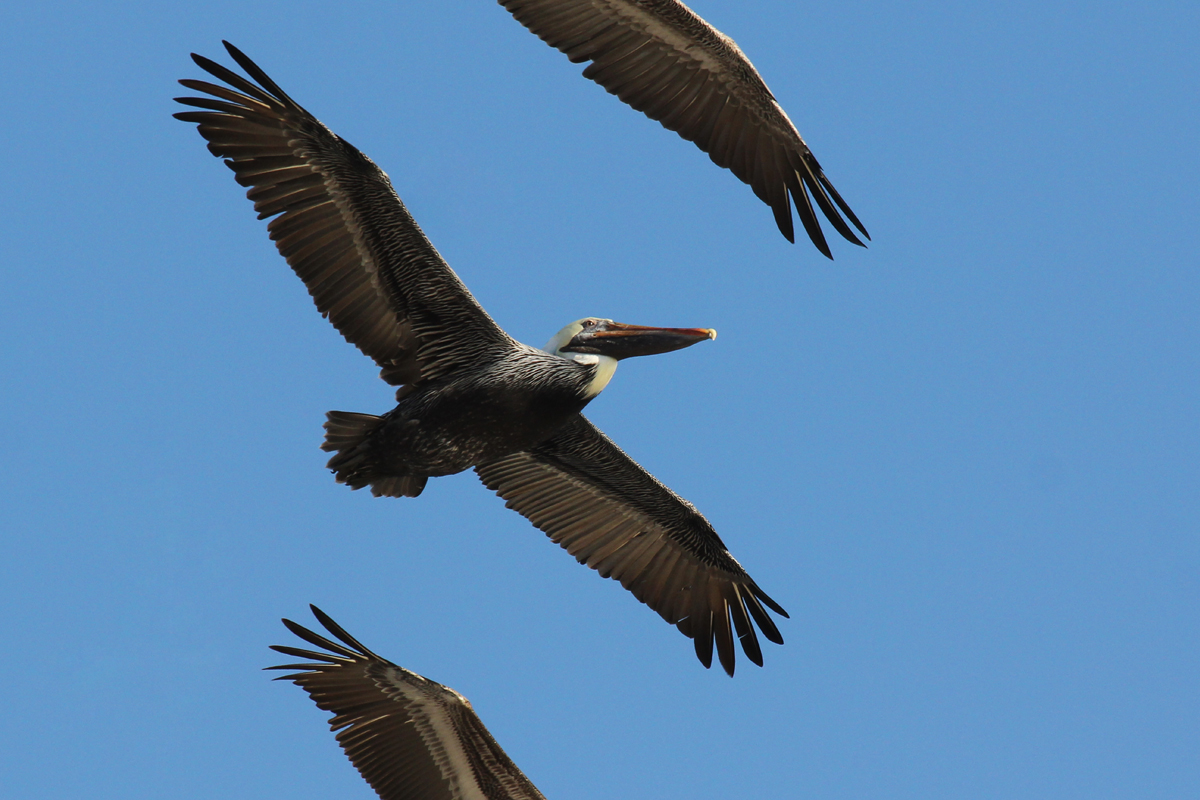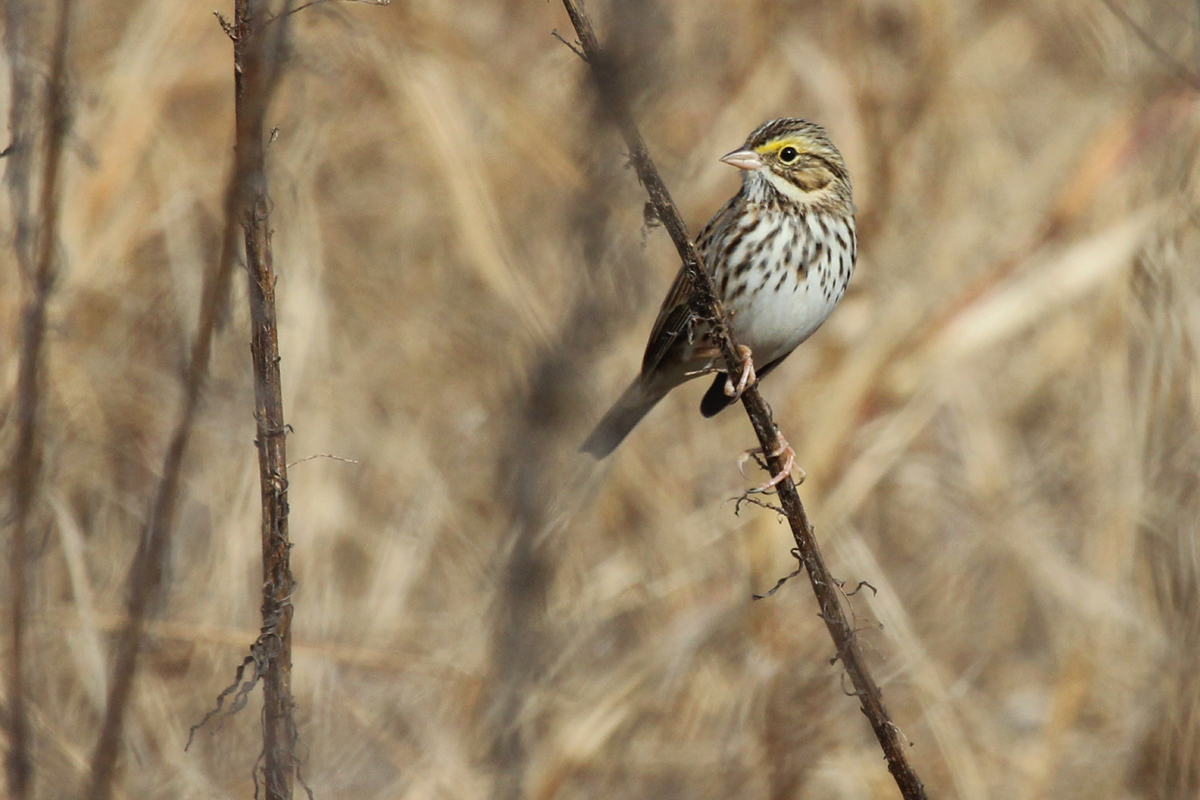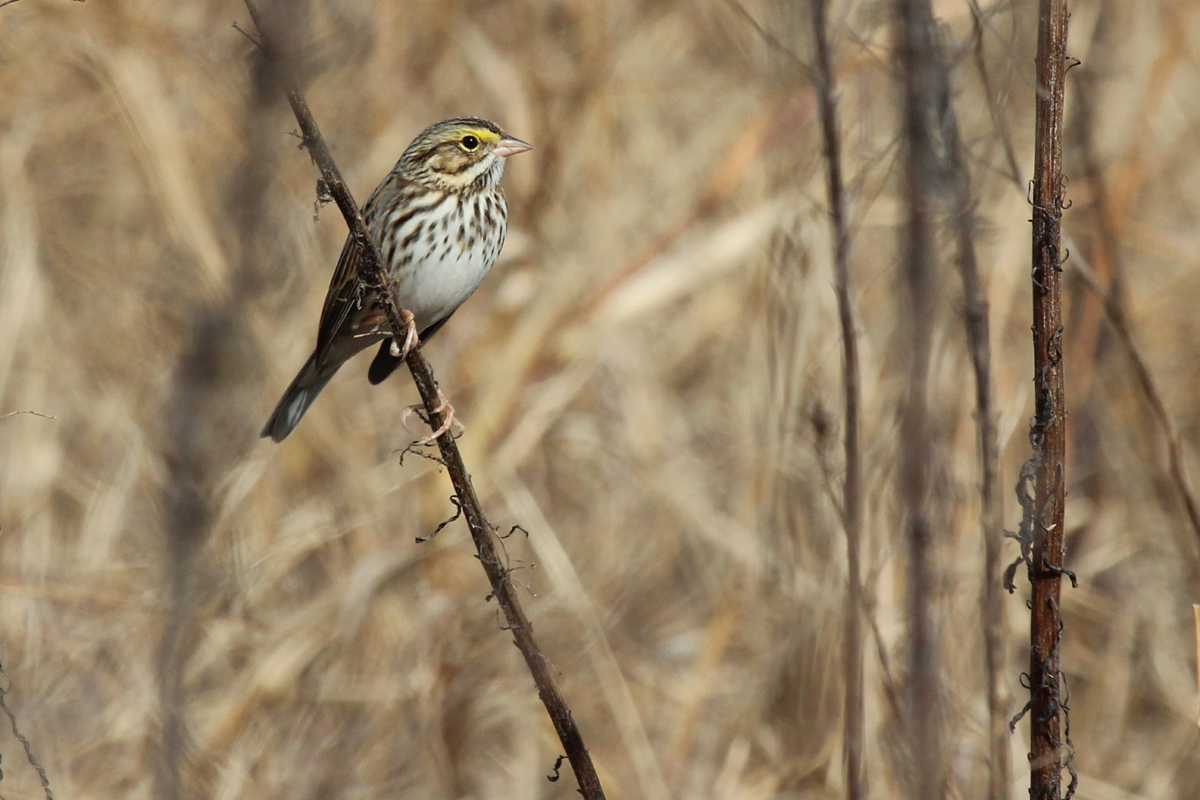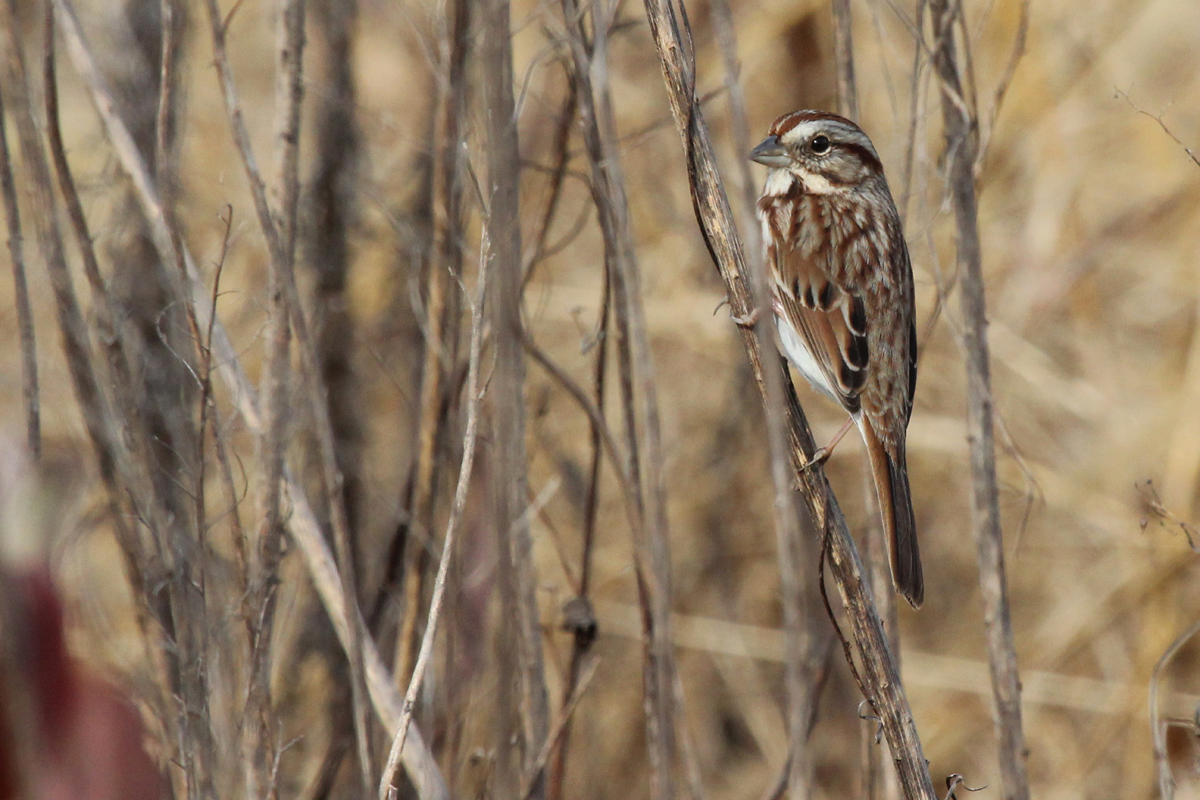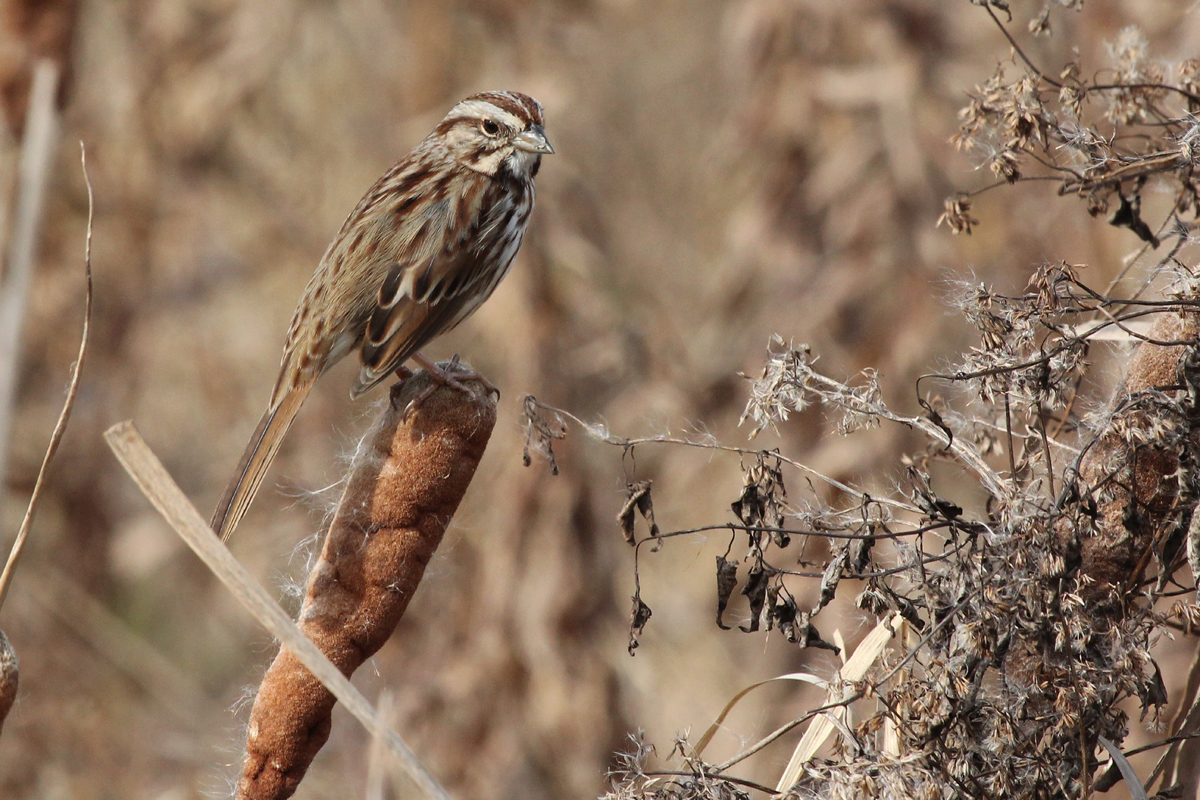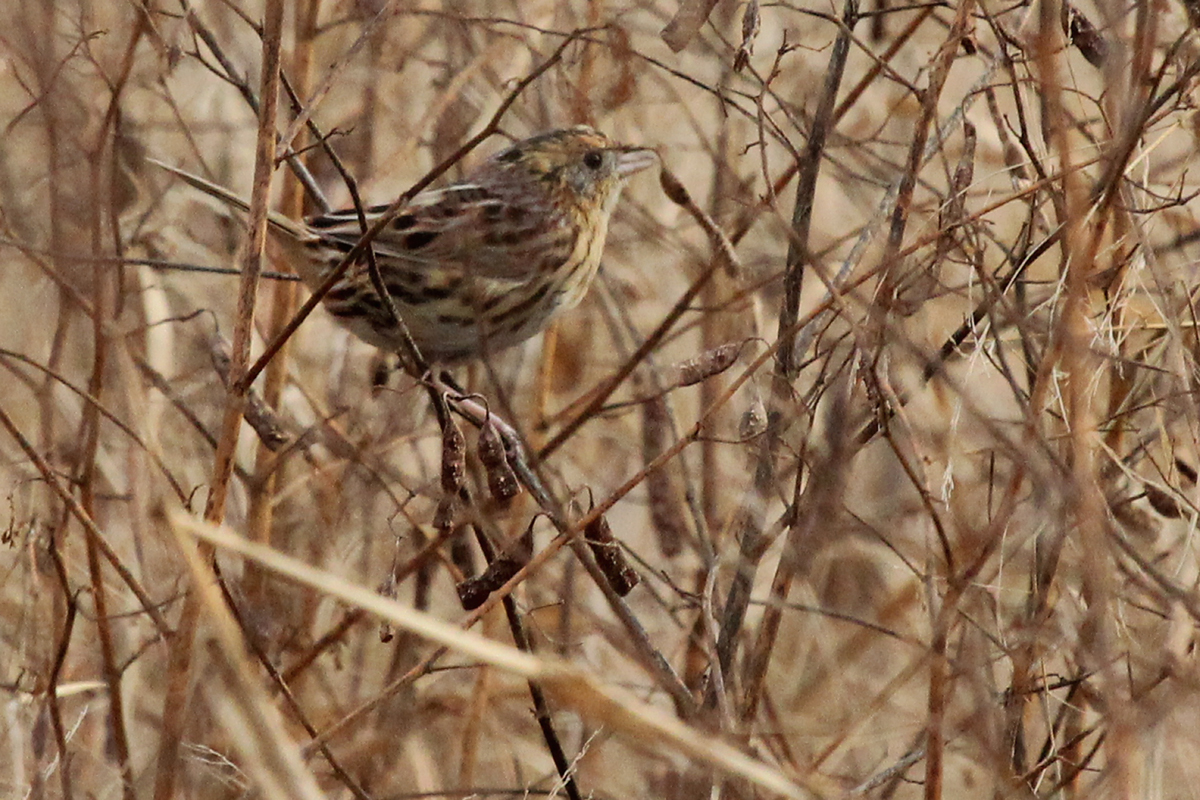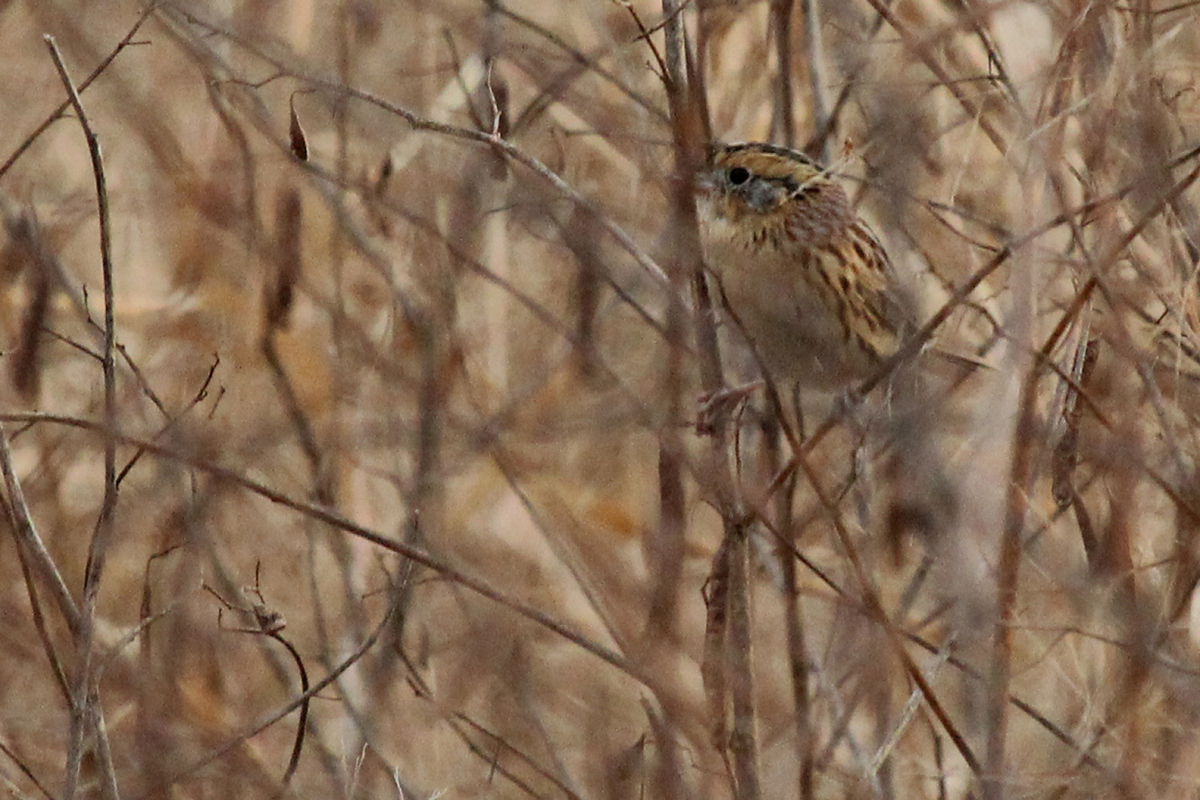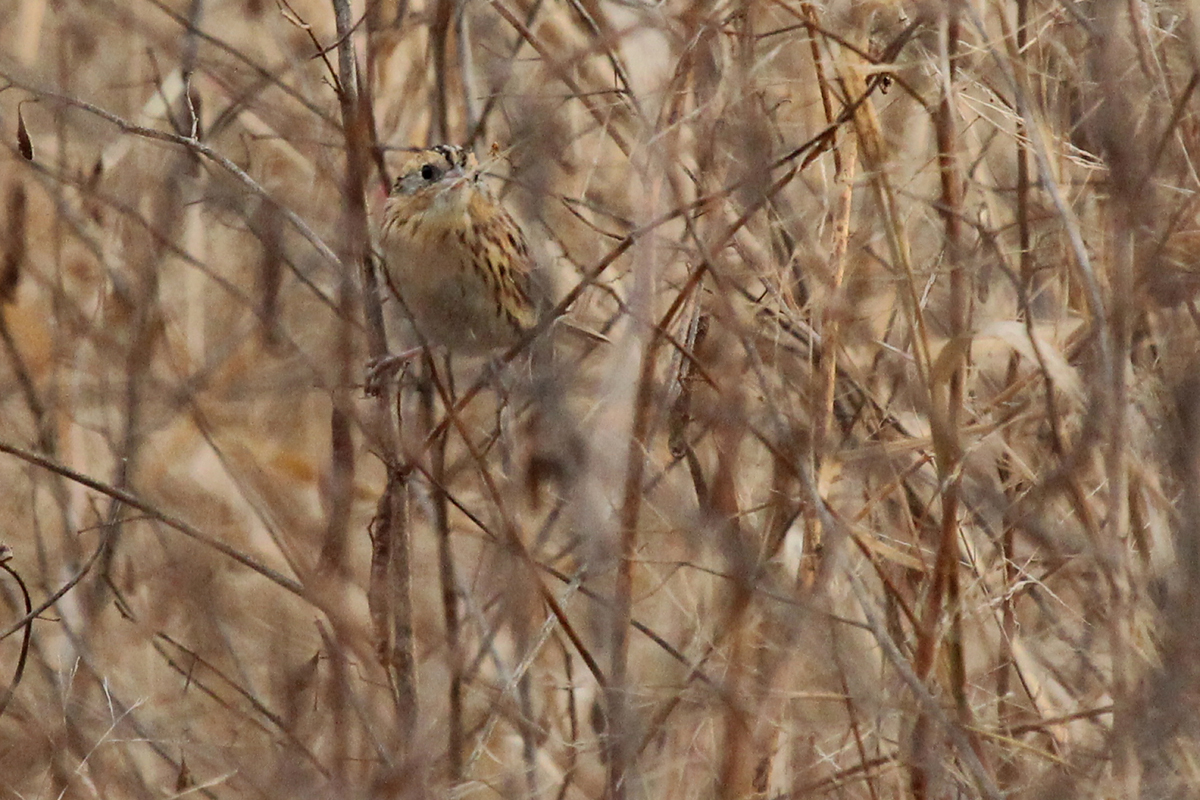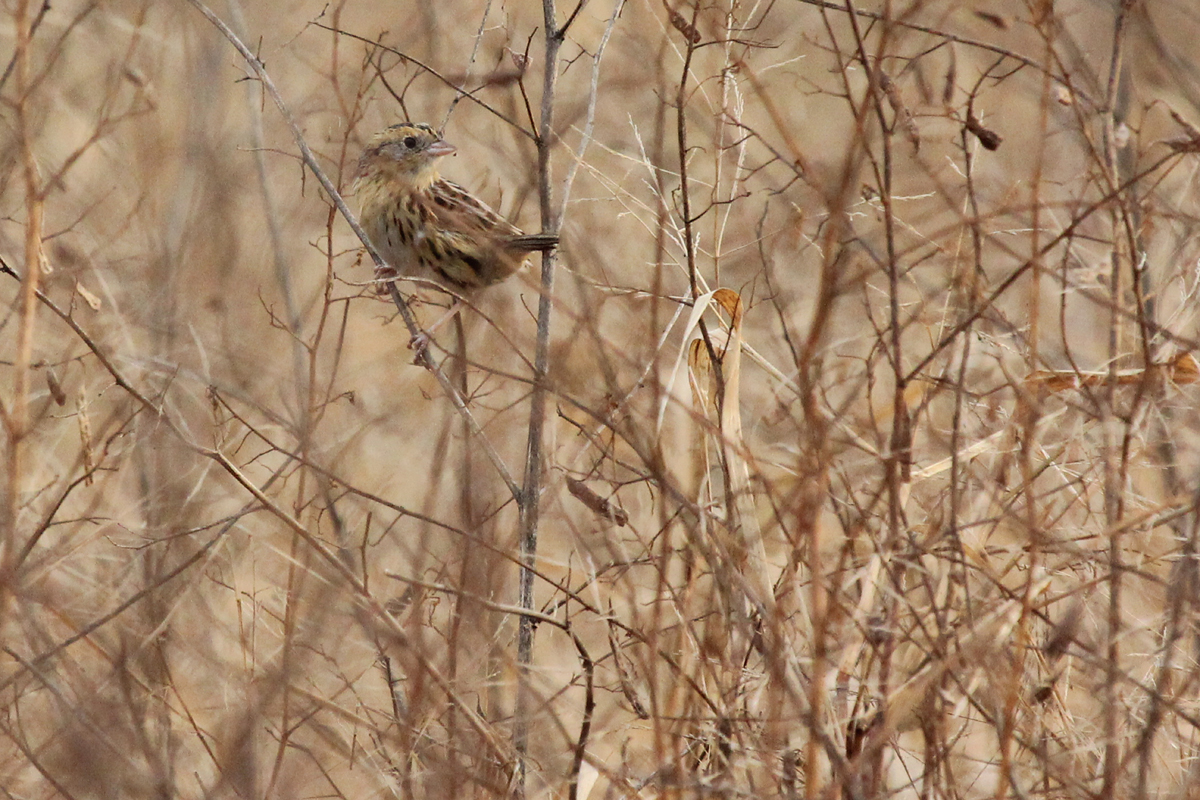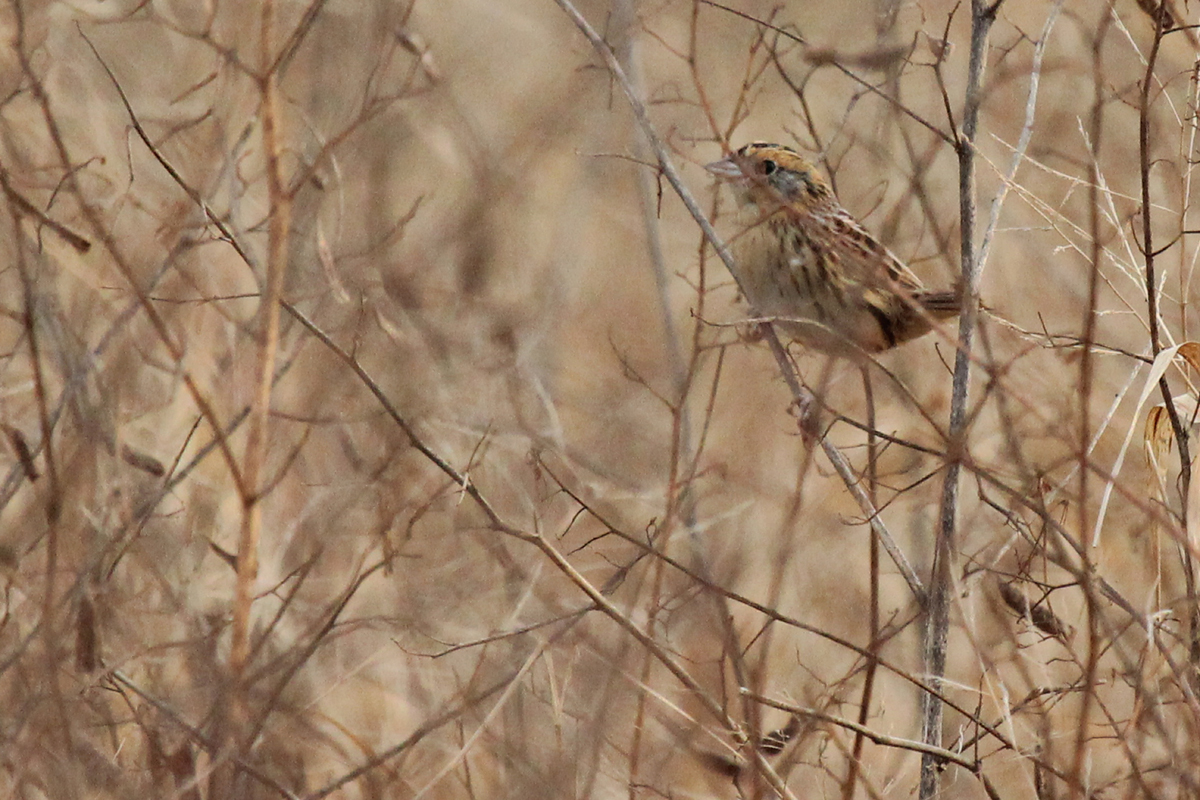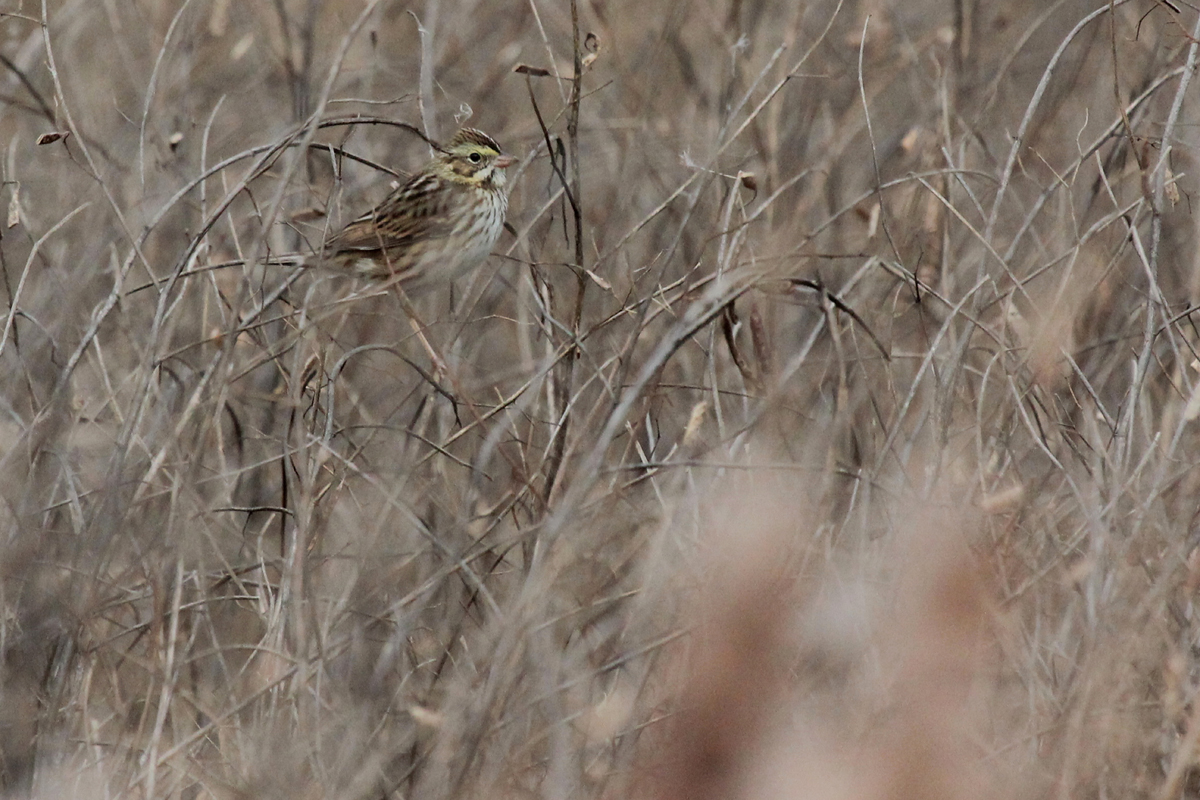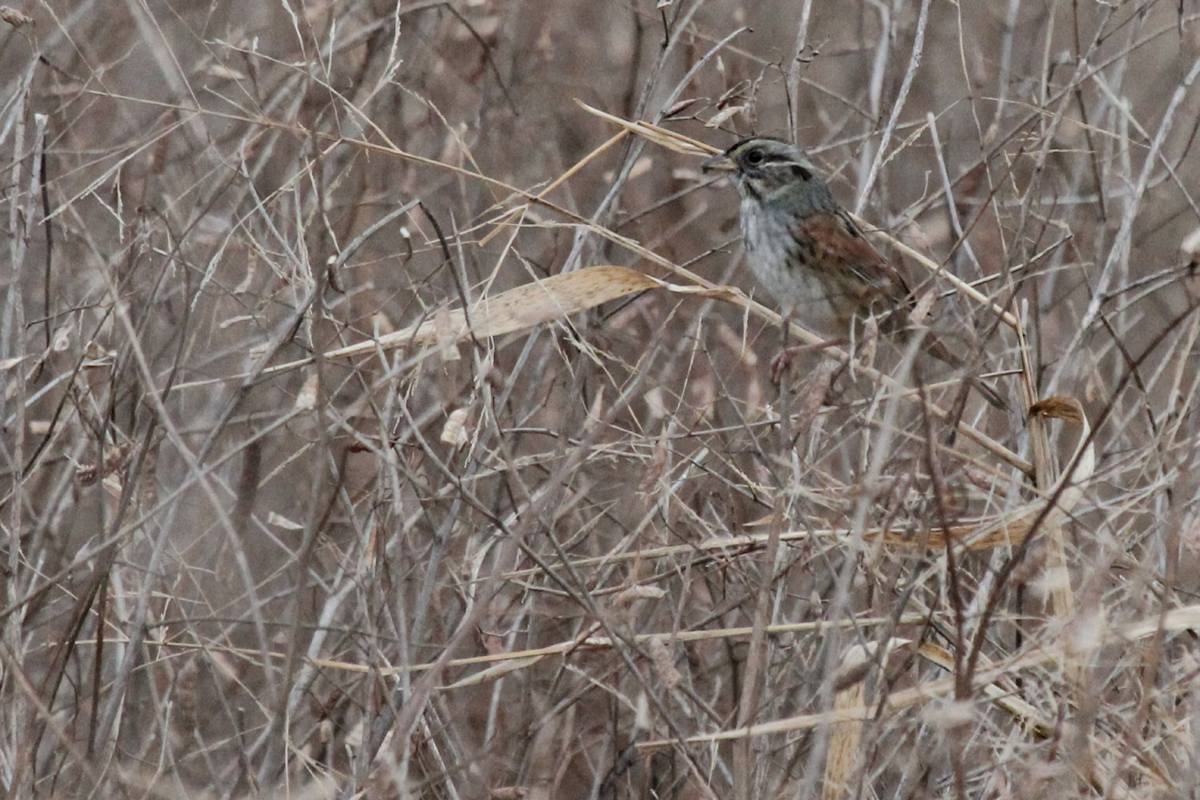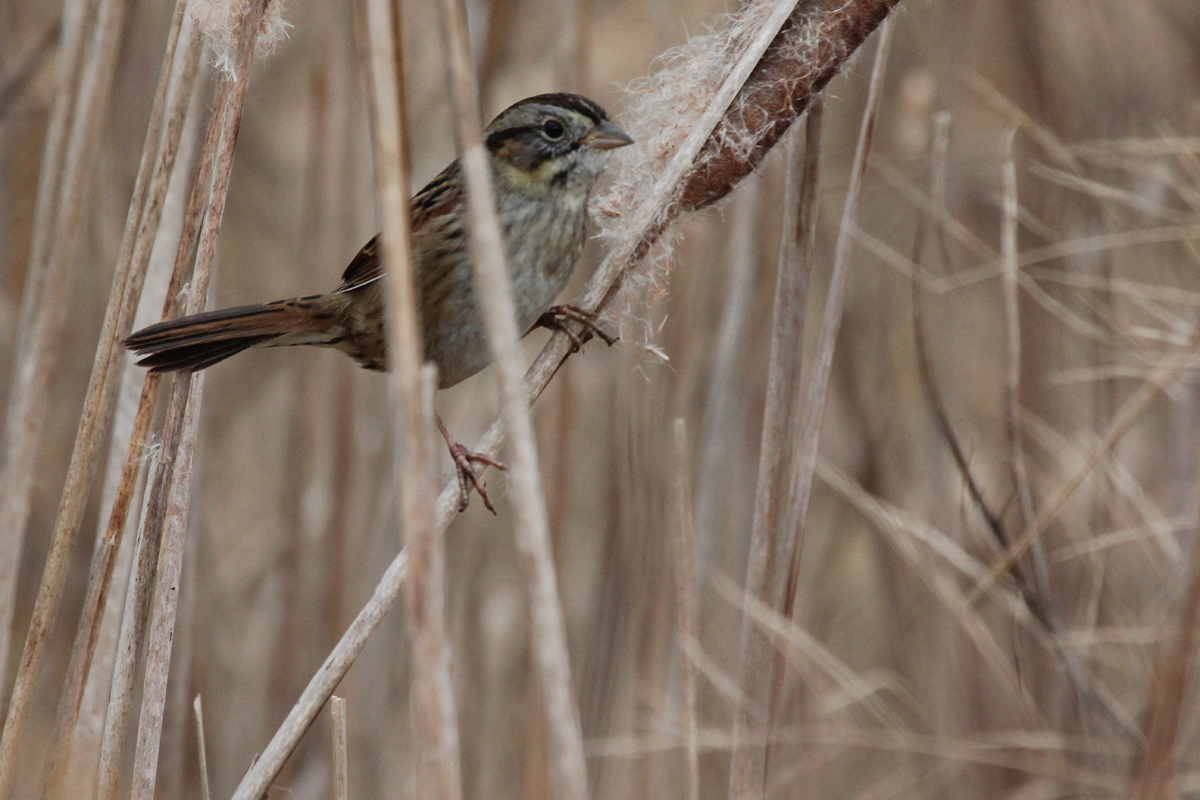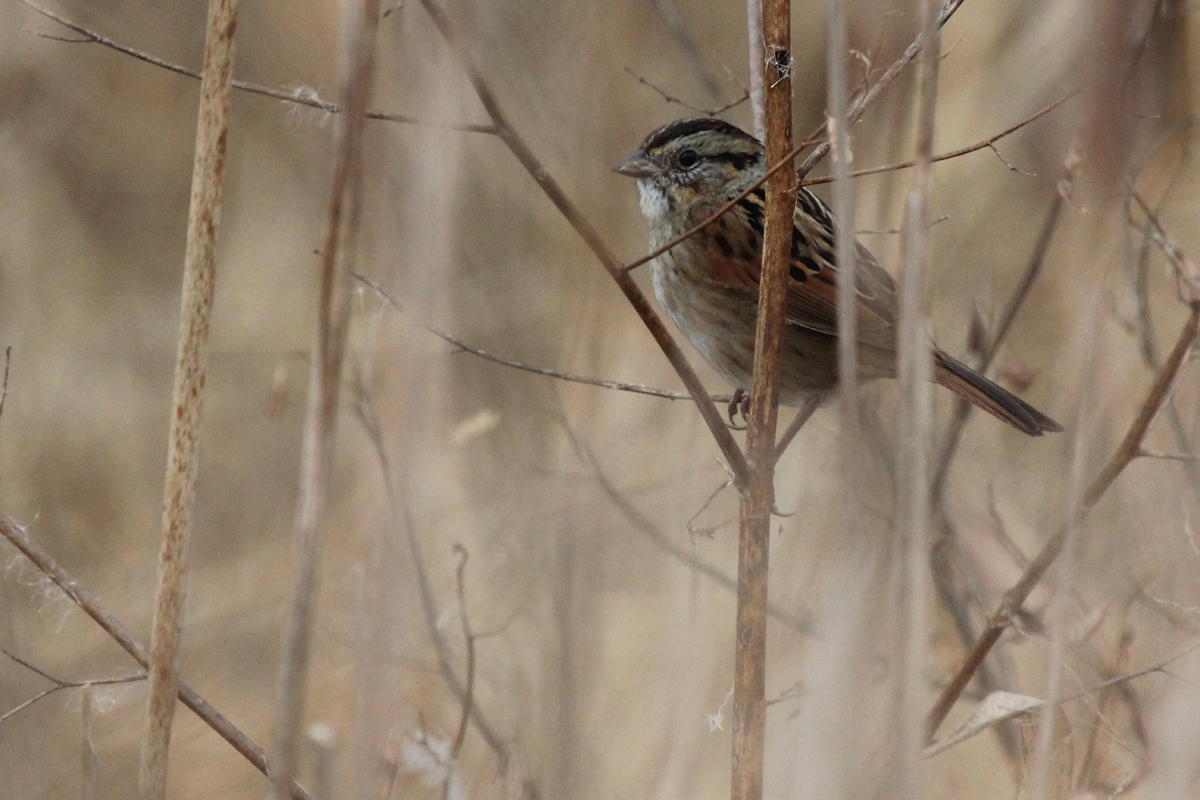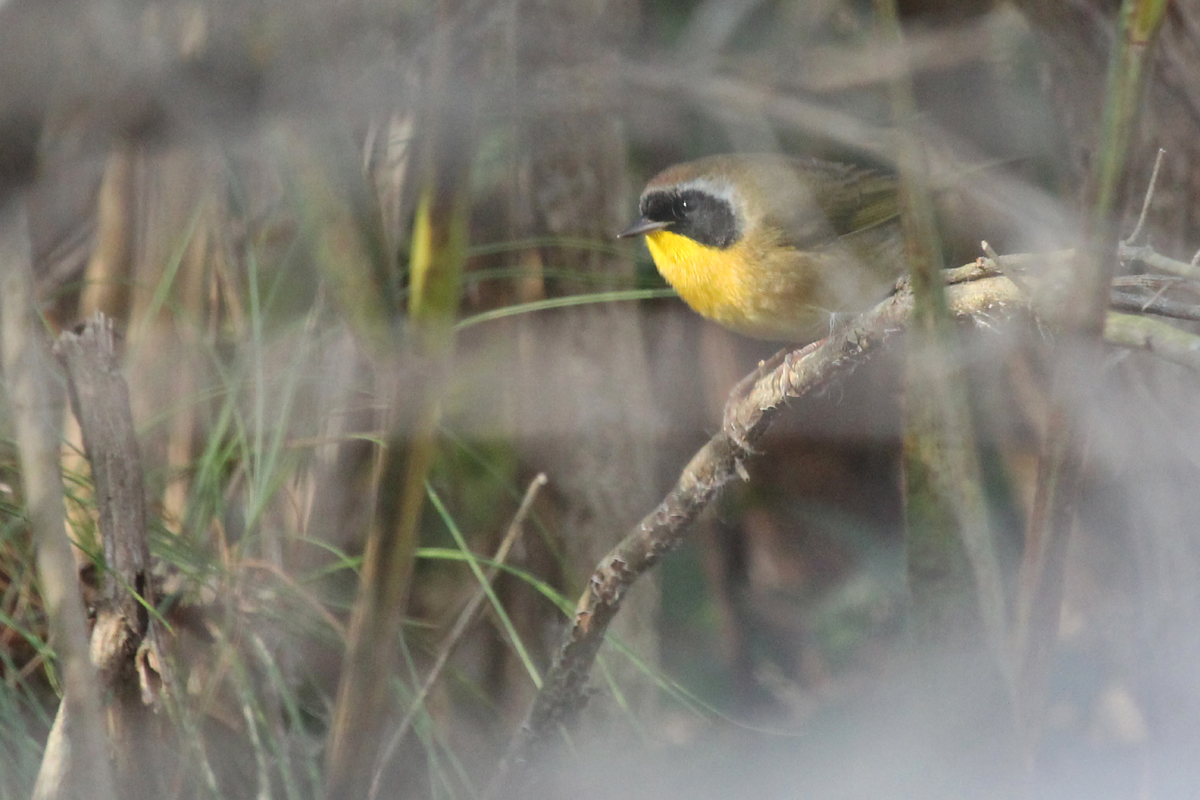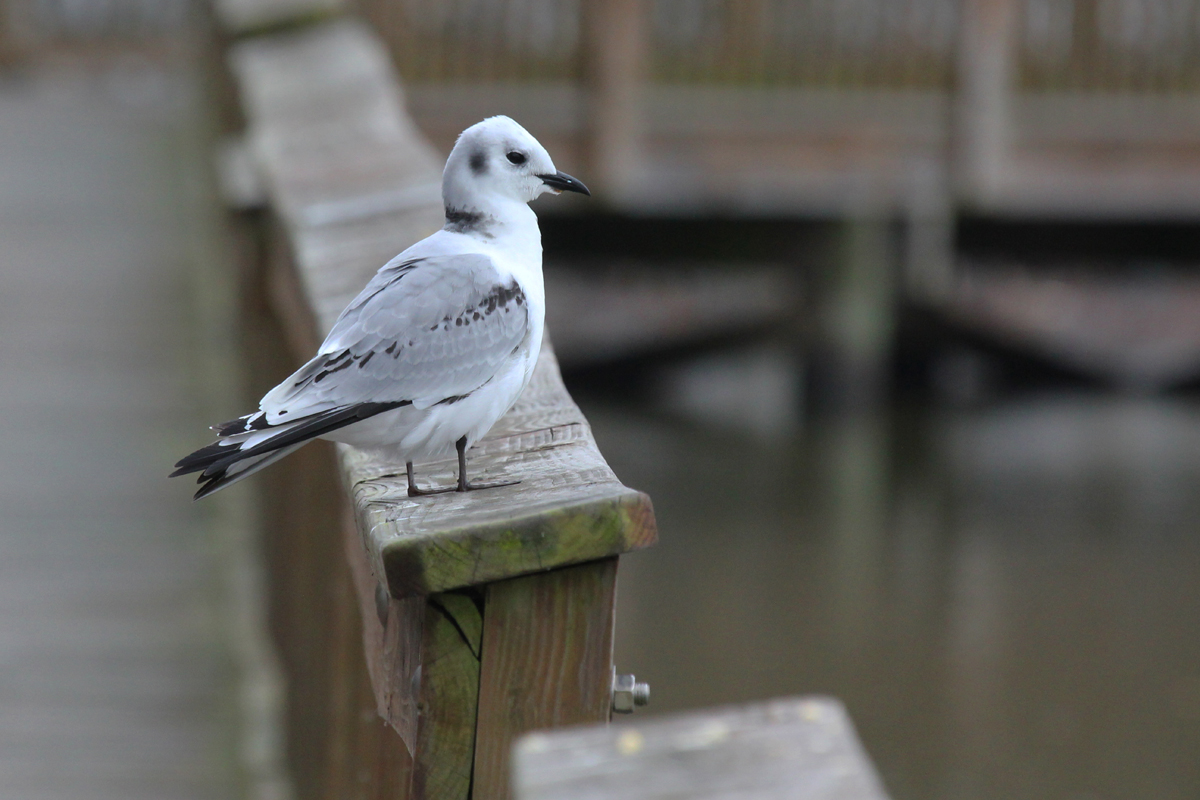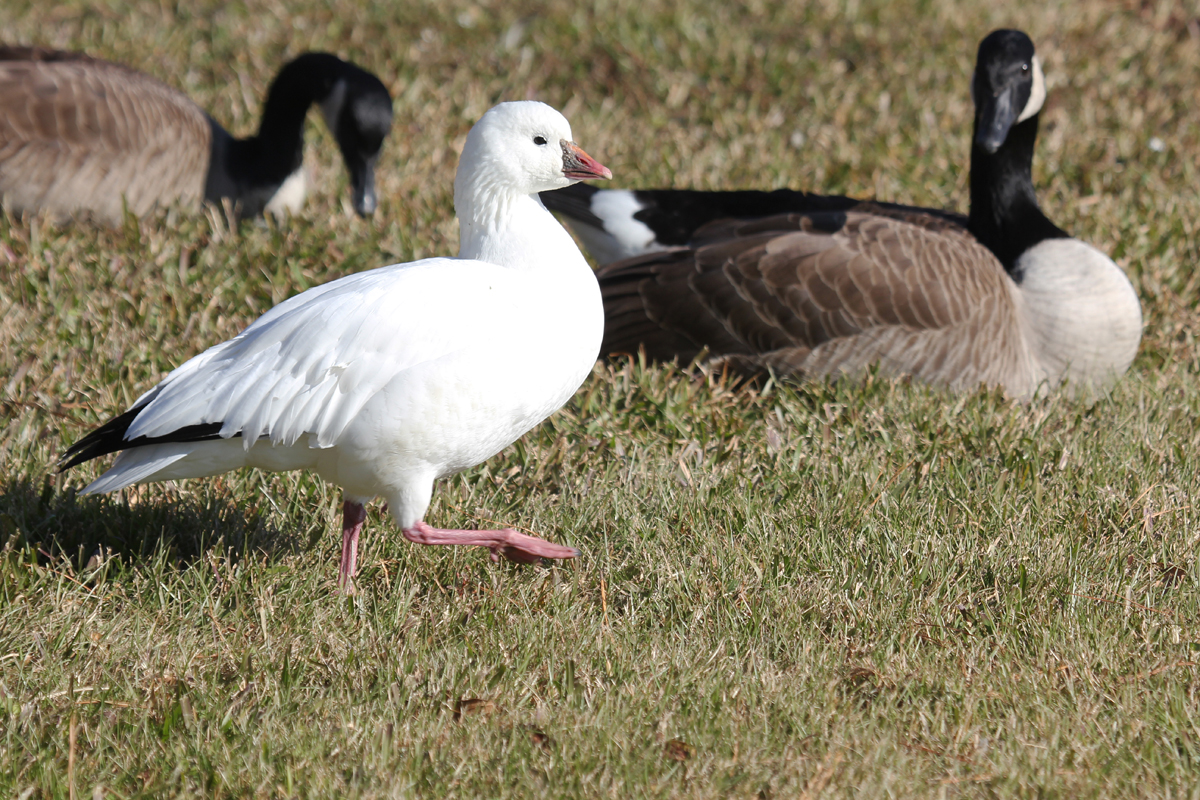Late December 2017 (21st-31st)
/Christmas Bird Counts, the end of the year, and some unseasonably cold & windy weather all came into play during Late December! Top birds during this period in Virginia Beach included a pair of new records for PAINTED BUNTING & COMMON GALLINULE, continuing reports of previously occurring ICELAND GULL (KUMLIEN’S), BLACK-LEGGED KITTIWAKE, ROSS’S GOOSE, CACKLING GOOSE, WESTERN TANAGER, unseasonal reports for Blue-winged Teal (31 Dec), Spotted Sandpiper (31 Dec) & Yellow-throated Warbler (21-31 Dec) and first-of-season arrivals for Redhead (28 Dec) & Canvasback (29 Dec).


OBSERVATIONS: One of the most brilliantly colored birds to grace Virginia Beach with its presence each winter, the PAINTED BUNTING, was reported at two different locations during late December! The first report came in from an undisclosed location (ph. Karen & Tom Beatty) on 21 Dec, a lovely adult male! Then, during the Back Bay Christmas Bird Count (CBC) on 29 Dec, a second individual (also an adult male) was observed as it flew across Muddy Creek Road in the Pungo Sector of the count circle (ph. Karen & Tom Beatty). Ironically (and incredibly) a Painted Bunting was observed last year on the count as well, by the same observers, on the same day, though this individual was a female or younger male and thus not showing the intensely colorful plumage of the 2017 bird. Unfortunately, the Muddy Creek Road individual was not observed in the following days, though several birders made the attempt, so it is possible it has found another location to spend the winter season. But, if anything, this report shows that it is possible to find one of these beauties by putting in the effort and simply covering a lot of ground in the southern half of the city.
With only two prior reports during 2017, and the most recent on 24 Nov, it came as a surprise when a COMMON GALLINULE was found along Munden Road between the Beasley & Whitehurst Tracts of Princess Anne WMA on 26 Dec (obs. Karen & Tom Beatty). This species has been reported in past years around this location, with the impoundments and proximity to Back Bay providing extensive habitat in all seasons. Unfortunately, by 29 Dec, the ditch this individual was observed in had frozen over, and the bird likely moved towards portions of the surrounding marsh where open water still exists.
During mid-December, an adult ICELAND GULL (KUMLIEN’S) was found on the beach near Neptune Park / 31st Street at the Oceanfront (ph. Andrew Baldelli). This same individual appears to have lingered along the resort beach into late December and was again found (this time at 61st Street Beach) on 30 Dec (ph. Lisa Rose / Dixie Sommers / Jason Strickland). It is likely that this Kumlien’s Gull will persist along the Oceanfront into the new year, observers will simply need to be vigilant about checking various locations from Rudee Inlet up to Fort Story. Note however that this bird was not logged on the Little Creek CBC, and it was likely to have been looked for by whomever was birding that territory.
Amazingly, the BLACK-LEGGED KITTIWAKE first observed 4 Dec at the Stumpy Lake Pier near Elbow Road’s junction with Indian River Road (ph. Jonathan Snyder) continued to be reported throughout the entirety of the late December period in what was best described by one accomplished eBirder as “vastly inappropriate habitat”! Since being discovered near the pier, the bird was observed 22 Dec for the first time (at least in terms of being noted by a report) along the causeway leading into the golf course / natural area (ph. Eric Alton & Tamara Conklin). Observers looking to see this “tarrock” (another term for juvenile kittiwakes) should spend some time at both locations, though it seems to be a bit more reliably reported in the afternoon hours thus far. It tends to stay near a flock of Ring-billed Gulls, but doesn’t seem to mix into the group, lingering typically towards the outside edges.
Though a single ROSS’S GOOSE has been known to be wintering in the Sherwood Lakes / Princess Anne Lane / Firefall Drive triangle since 9 Nov (obs. Andrew Baldelli), the late December period yielded the first multi-count report for this species on the season. While viewing the goose flock on the north pond of Sherwood Lakes on 21 Dec, three Ross’s Geese were found (ph. Karen & Tom Beatty, and shortly after ph. Mary Catherine Miguez)! This is reminiscent of the winter of 2016-17 when there was typically a single individual present, but a high count of three was eventually reached as well. One wonders if any of these might be the same birds from last year returning, or if this is a completely new batch just passing through as cold weather continues to overtake the open water to our north, turning it to an icy habitat unsuited for waterfowl.
As with the Ross’s Geese, the same flock of geese has also yielded an individual CACKLING GOOSE roaming over the same general area since 26 Nov (obs. David Clark). However, two individuals were noted in the flock while it rested also on the north pond of Sherwood Lakes on 21 Dec (obs. Karen & Tom Beatty). The key ID points to this species are finding the goose that is roughly half the size of the surrounding Canadas (about the size of a Mallard), and shows a very grayish brown overall color with a tiny bill. It is very likely that these birds will stay in the vicinity of the lake and agricultural fields nearby, so long as the weather doesn’t drive them further south.
Lastly in terms of year-round rarities, the female WESTERN TANAGER that has been visiting the feeders at an Alanton private residence since 3 Nov (obs. Michelle & Taryn Payne) was also spotted most recently on 28 Dec accompanied by a small group of Baltimore Orioles. This tanager was observed at the same location during the winter of 2016-17, persisting until at least 10 Apr, so this is another rarity likely to be observed and reported into 2018.
While not year-round rarities, several seasonally unexpected species were reported during late December, including: Blue-winged Teal, Spotted Sandpiper & Yellow-throated Warbler! By ‘seasonally unexpected’, I mean that each of these species is not annually reported (some might be annually occurring however) in Virginia Beach during the winter months. So there may be records of some in past winters, they aren’t generally expected to be reported, thus making any reports during Dec-Feb interesting! Each of these species was represented by only a single individual, with a male Blue-winged Teal being sighted 31 Dec on the second-to-northernmost impoundment of Princess Anne WMA’s Whitehurst Tract (ph. Rob Bielawski). Typically in the winter months, Blue-winged Teal are only likely to be found on Back Bay’s inaccessible waters or in the off-limits-to-the-public impoundment at Back Bay NWR, so any reports away from those areas are worth mentioning.
On the 31 Dec Little Creek CBC, an immature Spotted Sandpiper was found (ph. Andrew Baldelli / Adam D’Onofrio / Lisa Rose) along Long Creek in First Landing State Park along the Fox Run Trail’s shoreline! Currently, eBird only has one other December record for this species in Virginia Beach, that being an individual at Back Bay NWR on 1 Dec 1985 (obs. Edward Brinkley). It would be highly worth the effort to try and keep tabs on this bird to see just how long it persists in the area, and hopefully there will be more observations, as there isn’t a single January eBird report for the species.
Last but not certainly not least, a Yellow-throated Warbler has continued to visit the feeders of an Aragona Village private residence all the way through the period, and dating back to 7 Dec (ph. Maggee Smith). Since this report is being written after the new year has already begun, it should be mentioned that it has persisted into 2018 as well! Interestingly, last year the Little Creek CBC also produced a Cape May Warbler and Black-and-white Warbler, but it appears this Yellow-throated Warbler is the only non-typical wintering warbler currently known to be residing in Virginia Beach. In a usual winter, Yellow-rumped Warblers, Pine Warblers, Palm Warblers, Orange-crowned Warblers & Common Yellowthroats are the only expected species, so any outside of these five species would be well worth reporting to eBird.
Only one first-of-season arrival was detected this period, but it was a long overdue species: Redhead! The first individual was reported 28 Dec at Dam Neck Naval Annex (ph. Karen & Tom Beatty). This species is usually detected starting in late November around here, but appears to be behind the times this season, along with Canvasback, which also had its first arrival of the season on 29 Dec during the Back Bay CBC (obs. Andrew Baldelli & Tracy Tate) in the Sigma Sector! With freezing of lakes beginning towards the end of the period, it is likely that we’ll see more waterfowl reports from the larger tracts of water that stay open during the colder winters, so these will be worth watching.
Lastly, in the not-necessarily-noteworthy, but very interesting section of the report, we had quite a few species pop up that are worth a quick mention. Single-count Blue-headed Vireos were reported at Lake Smith on 22 Dec (obs. Tracy Tate), at Pleasure House Point on 26 Dec (obs. Bob Swiader) and also along Colechester Road in the Sigma Sector during the Back Bay CBC on 29 Dec (obs. Andrew Baldelli & Tracy Tate). Also, two were reported in the Cypress Point neighborhood on Christmas Day, 25 Dec (obs. Debbie Schroeder). Typically, this species is difficult to locate away from First Landing SP in winter, but it clearly exists in more areas and likely just is skillful at going undetected. At least two White-crowned Sparrows were found during the Back Bay CBC on 29 Dec with one along Robinson Road (obs. Karen & Tom Beatty) and one in Ashville Park (obs. Andrew Baldelli & Tracy Tate). Last winter, we were all blessed with the continued occurrence of four first-year White-crowned Sparrows at Back Bay NWR that stayed through the season; this year, the species has been much harder to find, and no adults have been logged this winter within our borders. “Ipswich” Savannah Sparrows were detected at Pleasure House Point NA on 26 Dec (obs. Bob Swiader). A pair of Great Cormorants was observed at Stumpy Lake on 23 Dec during a stakeout of the Black-legged Kittiwake (obs. Arun Bose). Unfortunately the kittiwake did not cooperate that day, but an inland report of Great Cormorant was actually more unexpected after the kittiwake has persisted for almost a month now! At least two Ruby-throated Hummingbirds were still being observed into late December, with one present 25, 29 & 31 Dec in Cypress Point (ph. Debbie Schroeder) and another hummingbird (likely Ruby-throated) in Alanton on 28 Dec (obs. Michelle Payne). A single report for Razorbill came in as well, on 30 Dec offshore (obs. Curtis Hart). Finally, a small flock of Cattle Egrets has continued through December along Princess Anne Road’s west side, just north of Pleasant Ridge Road. This is likely the last remaining group in the state of Virginia, and I hope birders continue to seek them out in order to log their exact departure date. In the 2016-17 winter, the flock seemed to depart on 2 Jan (with one further report of two on 7 Feb), and returned on 1 Apr for the spring season; something worth watching this year to compare.



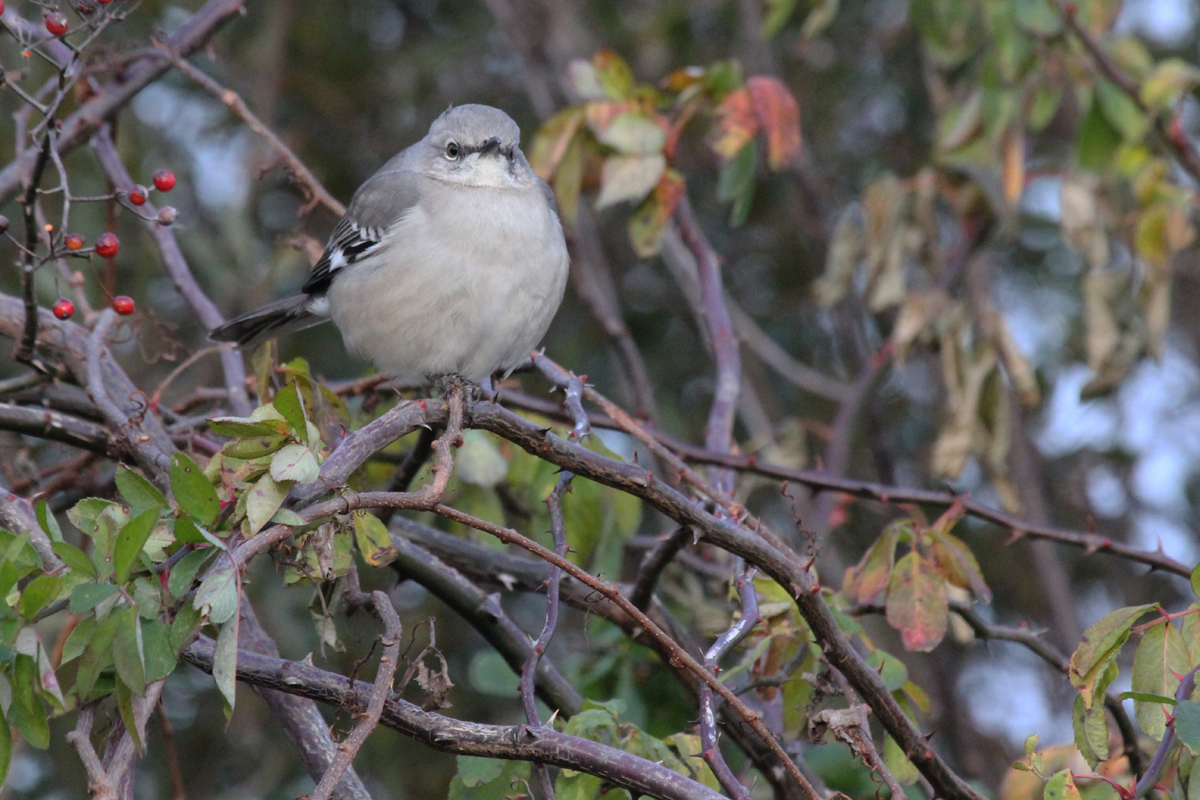
















WEATHER: Average daily high temperatures plummeted a whopping 7.9° from 52.6° F in mid-December to 44.7° (-10.4° from prior 10-year average), with average daily low temperatures dropping as well, 1.8° from 32.2° to 30.4° F (-8.3° from prior 10-year average). Overall, temperatures ranged from a minimum of 18° F (our coldest day of the season thus far, on 29 Dec) to a maximum of 69° (23 Dec). This was the first period since Early January to boast an average daily low temperature below freezing! Additionally, we haven’t seen temperatures this cold during late December since 2010 where the average daily low was a frigid 25.4°! Only a minor amount of precipitation (0.1”) fell during the period, scattered between 23/24 Dec (0.08”/0.02”). Maximum sustained winds at Oceana this period were 23 mph and gusts reached 34 mph on Christmas Day (25 Dec), and strong north/northwesterly persisted through the remainder of the period. The Winter Solstice, the shortest day of the year for the northern hemisphere, occurred on 21 Dec, so we are fortunate to now be seeing a slow increase in day length which will continue through the Summer Solstice in June. Sunrise/sunsets varied from 7:13 AM/4:51 PM (21 Dec) to 7:16 AM/4:57 PM (20 Dec), which means over all we GAINED 3 minutes of daylight during this period! Preliminary tide levels (referenced to MLLW) at the Sewell’s Point gauge (NOAA) in Norfolk varied from a minimum of -0.945 (2:06 AM, 27 Dec) to a maximum of 3.412 (11:42 AM, 31 Dec) as the tide was guided upward by persistent northerly winds across the Chesapeake Bay. Continuous freezing temperatures have caused most freshwater to begin freezing, and astonishingly, on 31 Dec Back Bay was entirely frozen over (as viewed from the refuge, and from Mill Landing Boat Ramp on the western shore).
SPECIES DOCUMENTED BY MEDIA and submitted to eBird for Virginia Beach during this period included: 21 DEC – Tufted Titmouse, White-breasted Nuthatch, Carolina Wren, American Robin, Pine Warbler, Yellow-rumped Warbler, YELLOW-THROATED WARBLER, Chipping Sparrow, Dark-eyed Junco & Northern Cardinal (Aragona Village / Maggee Smith); Northern Shoveler, Gadwall, American Wigeon, Pied-billed Grebe, Double-crested Cormorant, Great Blue Heron, Turkey Vulture, Downy Woodpecker, Carolina Chickadee, Carolina Wren, Brown Thrasher, Northern Cardinal & American Goldfinch (Stumpy Lake NA / Jonathan Snyder); Bald Eagle, Downy Woodpecker, Eastern Bluebird, Pine Warbler, Song Sparrow & Baltimore Oriole (Kempsville / Betty Sue Cohen); Hooded Merganser, Great Egret & Black-crowned Night-Heron (Middle Lake Holly / Karen & Tom Beatty); PAINTED BUNTING (Undisclosed Location / Karen & Tom Beatty); ROSS’S GOOSE (Sherwood Lakes / Karen & Tom Beatty); BLACK-LEGGED KITTIWAKE (Stumpy Lake Pier / Courtney Check); Snow Goose & ROSS’S GOOSE (Sherwood Lakes / Mary Catherine Miguez); Canada Goose, Mallard, Northern Pintail & Ring-necked Duck (Kings Grant Lakes / Jonathan Snyder); BLACK-LEGGED KITTIWAKE (Stumpy Lake Pier / Jason Schatti); BLACK-LEGGED KITTIWAKE (Stumpy Lake Pier / Nancy Barnhart). 22 DEC – Downy Woodpecker, Carolina Chickadee, Carolina Wren, Pine Warbler, Yellow-rumped Warbler, YELLOW-THROATED WARBLER & Northern Cardinal (Aragona Village / Maggee Smith); BLACK-LEGGED KITTIWAKE (Stumpy Lake Pier / Audrey Whitlock); Common Loon (Sherwood Lakes / Eric Alton); BLACK-LEGGED KITTIWAKE (Stumpy Lake NA / Eric Alton). 23 DEC – Red-bellied Woodpecker, Downy Woodpecker, Carolina Chickadee, Tufted Titmouse, White-breasted Nuthatch, Carolina Wren, Pine Warbler, Yellow-rumped Warbler, Yellow-throated Warbler, Northern Cardinal & House Finch (Aragona Village / Maggee Smith); Red-breasted Merganser, Red-throated Loon, Great Blue Heron, Forster’s Tern, Peregrine Falcon & Eastern Bluebird (Camp Pendleton SMR / Karen & Tom Beatty). 24 DEC – YELLOW-THROATED WARBLER (Aragona Village / Maggee Smith). 25 DEC – Red-bellied Woodpecker, Tufted Titmouse, White-breasted Nuthatch, Yellow-rumped Warbler, Northern Cardinal & American Goldfinch (Aragona Village / Maggee Smith). 26 DEC – Red-throated Loon, Rock Pigeon, Orange-crowned Warbler & Yellow-rumped Warbler (Little Island Park / Jonathan Snyder); Brown Pelican, Tree Swallow & Yellow-rumped Warbler (Back Bay NWR / Jonathan Snyder); Orange-crowned Warbler & Eastern Towhee (Back Bay NWR / Eric Alton); Common Loon, Bald Eagle & American Coot (Sherwood Lakes / Karen & Tom Beatty); White-throated Sparrow (Munden Rd. / Karen & Tom Beatty); Eastern Meadowlark (Sherwood Lakes / David Clark); BLACK-LEGGED KITTIWAKE (Stumpy Lake NA / Jonathan Snyder); YELLOW-THROATED WARBLER (Aragona Village / Maggee Smith); BLACK-LEGGED KITTIWAKE (Stumpy Lake NA / David Clark). 27 DEC – Red-bellied Woodpecker, YELLOW-THROATED WARBLER & Northern Cardinal (Aragona Village / Maggee Smith); Canada Goose, Northern Shoveler, Gadwall, Mallard, Hooded Merganser, Double-crested Cormorant, Great Blue Heron, Red-bellied Woodpecker, Pileated Woodpecker, Tufted Titmouse & Northern Cardinal (Stumpy Lake NA / Jonathan Snyder); Snow Goose, ROSS’S GOOSE, Canada Goose & Mallard (Firefall Dr. / Karen & Tom Beatty); BLACK-LEGGED KITTIWAKE (Stumpy Lake NA / Jeff Kietzmann). 28 DEC – Cooper’s Hawk, Mourning Dove, Red-bellied Woodpecker, Yellow-bellied Sapsucker, Carolina Chickadee, Tufted Titmouse, Brown-headed Nuthatch, Carolina Wren, Eastern Bluebird, Brown Thrasher, Yellow-rumped Warbler, Chipping Sparrow, Dark-eyed Junco, White-throated Sparrow, Northern Cardinal & House Finch (Glenmore Hunt Tr. / Karen & Tom Beatty); Yellow-bellied Sapsucker (Quail Pointe Cove / Cindy Hamilton); Downy Woodpecker, Carolina Chickadee & Yellow-throated Warbler (Aragona Village / Maggee Smith); Redhead (Dam Neck NA / Karen & Tom Beatty); Northern Shoveler, Gadwall, Ring-necked Duck, Hooded Merganser, Great Blue Heron, Ring-billed Gull & Northern Mockingbird (Stumpy Lake NA / Jonathan Snyder). 29 DEC – Red-shouldered Hawk, Red-tailed Hawk, American Kestrel, American Robin, Gray Catbird, Brown Thrasher, Northern Mockingbird, American Pipit, Common Yellowthroat, Palm Warbler (Yellow), Yellow-rumped Warbler, Fox Sparrow & Song Sparrow (Various / Rob Bielawski); Carolina Chickadee, YELLOW-THROATED WARBLER, Northern Cardinal & American Goldfinch (Aragona Village / Maggee Smith); PAINTED BUNTING (Muddy Creek Rd. / Karen & Tom Beatty); PAINTED BUNTING (Muddy Creek Rd. / Rob Bielawski); Carolina Chickadee (Horn Point Rd. / Karen & Tom Beatty); Bald Eagle, Yellow-rumped Warbler & American Goldfinch (Charity Neck Rd. / Karen & Tom Beatty); Northern Harrier (Princess Anne Rd. / Karen & Tom Beatty); Merlin (Malbon Rd. / Karen & Tom Beatty); Double-crested Cormorant, Great Blue Heron & BLACK-LEGGED KITTIWAKE (Stumpy Lake NA / Jonathan Snyder). 30 DEC – YELLOW-THROATED WARBLER (Aragona Village / Maggee Smith); ICELAND GULL (KUMLIEN’S) (61st Street Beach / Lisa Rose); Common Eider (First Landing SP / Dixie Sommers); Common Goldeneye (Buccaneer Rd. / Rob Bielawski). 31 DEC – SPOTTED SANDPIPER (First Landing SP / Andrew Baldelli); BLUE-WINGED TEAL, Hooded Merganser, Golden-crowned Kinglet & Ruby-crowned Kinglet (Princess Anne WMA Whitehurst Tract / Rob Bielawski); Ruby-throated Hummingbird (North Point Ct. / Debbie Schroeder); SPOTTED SANDPIPER (First Landing SP / Adam D’Onofrio); Eastern Bluebird, Pine Warbler & American Goldfinch (Private Residence / Kathy Spencer); Gadwall, American Black Duck, Hooded Merganser, Red-breasted Merganser, Killdeer & Song Sparrow (Pleasure House Point NA / James Shelton); BLACK-LEGGED KITTIWAKE (Stumpy Lake Natural Area / Pamela Monahan); Sanderling (First Landing SP / James Shelton).
LOOKAHEAD: The year 2017 has now come to a close, and an incredible number of interesting bird reports have been brought forth across Virginia Beach over the last 365 days! As we head into 2018 and the mid-winter month of January, remember that many of the birds observed in late December are important to track to check for wintering status. Goose flocks around Sherwood Lakes, Firefall Drive and Princess Anne Lane need to be checked regularly, as do all the blackbird flocks that are happened upon. This winter season is shaping up to be an incredible time period for waterfowl reports in the area, given the already-low temperatures and icing up of freshwater bodies to our north. The Great Lakes are freezing rapidly, which is likely to send large numbers of ducks, geese and other waterbirds towards the East Coast. All open bodies of water will become goldmines for these birds, and rarities are likely to be found in tightly packed flocks moving forward. As always, make sure to report your finds to eBird so the data can be used to adjust the expected arrival dates and to view the full listing of each species’ “average expected arrival dates”!
Next Entry | Entry Index | Previous Entry | Same Period Last Year
For further information regarding this thrice-monthly, online publication, please visit the Journal Overview Page which provides an in-depth explanation of the format, layout and composition of the journal. As always, thank you for reading, and please leave me a comment below (you may use your Facebook, Gmail or other accounts to easily do so), or just click the Heart icon to the lower right of this post to let me know you stopped in!


